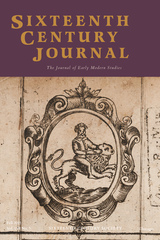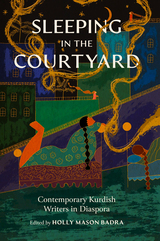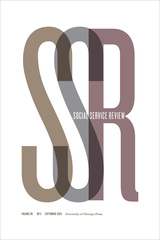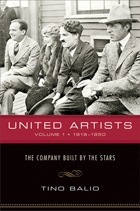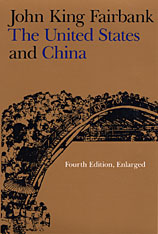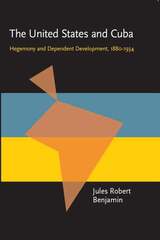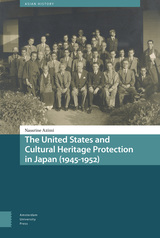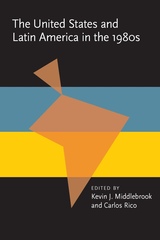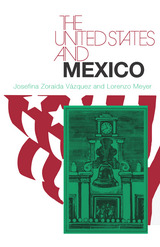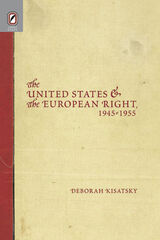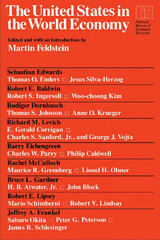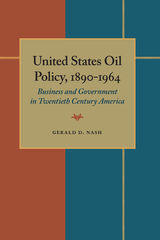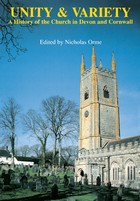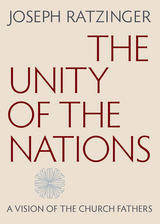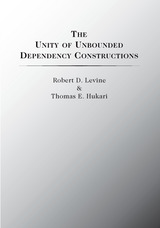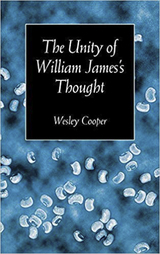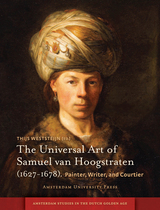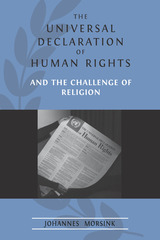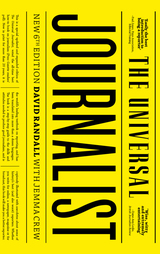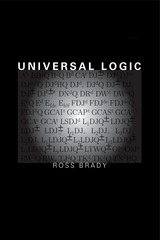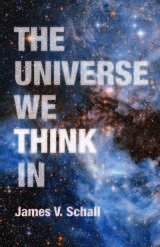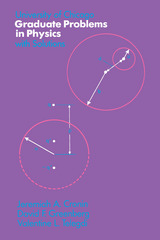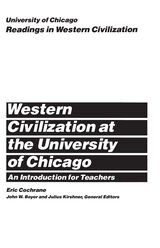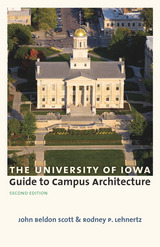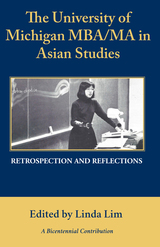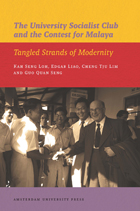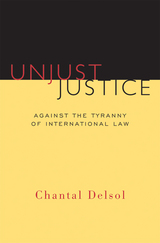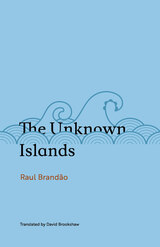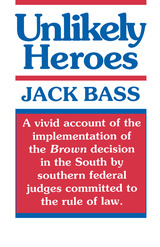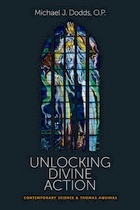United Artists, Volume 1, 1919–1950: The Company Built by the Stars
Tino Balio
University of Wisconsin Press, 2009 United Artists was a unique motion picture company in the history of Hollywood. Founded by Charlie Chaplin, Mary Pickford, Douglas Fairbanks, and director D.W. Griffith—four of the greatest names of the silent era—United Artists functioned as a distribution company for independent producers. In this lively and detailed history of United Artists from 1919 through 1951, film scholar Tino Balio chronicles the company’s struggle for survival, its rise to prominence as the Tiffany of the industry, and its near extinction in the 1940s.
This edition is updated with a new introduction by Balio that places in relief UA’s operations for those readers who may be unfamiliar with film industry practices and adds new perspective to the company’s place within Hollywood.
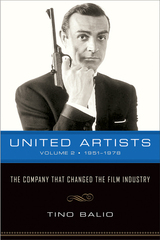 United Artists, Volume 2, 1951–1978: The Company That Changed the Film Industry
Tino Balio
University of Wisconsin Press, 2009 In this second volume of Tino Balio’s history of United Artists, he examines the turnaround of the company in the hands of Arthur Krim and Robert Benjamin in the 1950s, when United Artists devised a successful strategy based on the financing and distribution of independent production that transformed the company into an industry leader. Drawing on corporate records and interviews, Balio follows United Artists through its merger with Transamerica in the 1960s and its sale to MGM after the financial debacle of the film Heaven’s Gate. With its attention to the role of film as both an art form and an economic institution, United Artists: The Company That Changed the Film Industry is an indispensable study of one company’s fortunes from the 1950s to the 1980s and a clear-eyed analysis of the film industry as a whole.
This edition includes an expanded introduction that examines the history of United Artists from 1978 to 2008, as well as an account of Arthur Krim’s attempt to mirror UA’s success at Orion Pictures from 1978 to 1991.
 The United Brotherhood of Carpenters: The First Hundred Years
Walter Galenson
Harvard University Press, 1983 What makes American labor unions distinctive from others in advanced Western countries is neither as simple as their wanting “more” nor as philosophical as their operating in an open-class society. Through a comprehensive analysis of the United Brotherhood of Carpenters—the largest union before the 1930s and the pioneer—Walter Galenson details the reasons for the union’s success. He finds that the Carpenters survived the vicissitudes of rapid industrialization and modernization because it was a conservative, business union.
From its inception in 1881, the Carpenters’ union embraced the capitalist system and worked to improve productivity. This resulted in a higher wage scale, greater leisure time, use of technology to stretch construction work over the winter months, increased fringe benefits, job security during jurisdictional disputes, and more than normal advances by minorities and blacks. Galenson’s book is based on a vast sampling of archival materials, including union records, diaries, minutes of local and affiliate unions, and AFL and CIO primary sources. The author blends narrative with shrewd intuitive analysis to provide an indispensable source for labor and economic historians and students of labor movements.
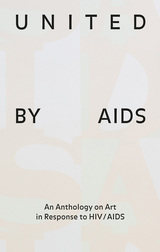 United by AIDS: An Anthology on Art in Response to HIV/AIDS
Edited by Raphael Gygax and Heike Munder
Scheidegger and Spiess, 2019 The appearance of HIV/AIDS in the early 1980s and its subsequent rapid spread left deep marks on society. Artists and activists across the world responded to both the illness itself and its effects with moving work that reflects on loss, remembrance, and activism in art.
United by AIDS sheds light on the multifaceted and complex interrelation between art and HIV/AIDS from the 1980s to the present. Published to accompany an exhibition at Zurich’s Migros Museum of Contemporary Art, it looks at the blurred lines between art production and HIV/AIDS activism and showcases artists who played—and still play—leading roles in this discourse. Alongside fifty illustrations of important works, including many in color, the book includes brief texts on the featured artists and essays by Douglas Crimp, Alexander García Düttmann, Raphael Gygax, Elsa Himmer, Ted Kerr, Elisabeth Lebovici, and Nurja Ritter.
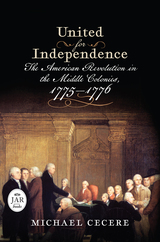 United for Independence: The American Revolution in the Middle Colonies, 1775–1776
Michael Cecere
Westholme Publishing, 2023 The Independence Trilogy
In the aftermath of the battles of Lexington and Concord in April 1775 and the start of the Revolutionary War, it was not clear whether the colonies outside of New England would participate militarily in the conflict. Troops from the four New England colonies surrounded Boston immediately after the fighting at Lexington and Concord, and two months into the standoff the Continental Congress, meeting in Philadelphia, assumed authority over the New England army, but the middle and southern colonies had yet to see armed conflict or bloodshed with British forces.
In United for Independence: The American Revolution in the Middle Colonies, 1775–1776, historian Michael Cecere examines how the inhabitants of New York, New Jersey, Pennsylvania, Delaware, and Maryland reacted to the outbreak of war in Massachusetts. Leaders in these middle colonies, influenced by strong Loyalist sentiment within their borders and, in some cases, among themselves, fiercely debated whether to support the war in New England. Congress’s decision in the summer to establish the Continental Army, and its authorization for an invasion of Canada, both of which involved troops from the middle colonies, set the stage for their full-scale involvement in the Revolutionary War.
Using primary source extracts and proceeding chronologically from the spring of 1775 to the fall of 1776, the author presents the key events in each of these colonies, from the political struggles between Whigs and Tories, through the failed Canadian expedition, to the loss of Long Island and New York City. Designed for readers to understand the sequence of events that transformed a resistance movement into a war for independence, United for Independence provides an important overview of events in the middle colonies at the start of the Revolutionary War that complements other works that focus on specific military clashes and campaigns.
 United Government and Foreign Policy in Russia, 1900–1914
David MacLaren McDonald
Harvard University Press In 1904 a small, distant war brought Russia to the brink of internal collapse—and yet within ten years the country embroiled itself in an incomparably larger conflict close to home. How the war with Japan and its aftermath actually steered Russia toward such an unlikely, fateful decision is the subject of David McDonald’s book, a remarkable analysis of Russian foreign policy on the eve of World War I.
The revolutions that followed the Russo-Japanese War confirmed for Russian statesmen their belief that complications abroad threatened the domestic order. McDonald shows how this perceived connection prompted the institutional measures intended to minimize the risks of foreign entanglements, principally the reform of Council of Ministers as a “United Government” that would share the emperor’s role in forming foreign policy. These measures, as McDonald demonstrates, had a decisive effect on Russia’s restrained response to trouble in the Balkans, and consequently, on the course of world history.
McDonald’s analysis integrates the history of Russian foreign policy at this critical juncture with accounts of the “crisis of autocracy” that marked the early twentieth century. Depicting Nicholas II’s struggle with his ministers over the direction of foreign policy, the book offers insight into the evolution of the bureaucratic state and its relation to domestic society in late imperial Russia.
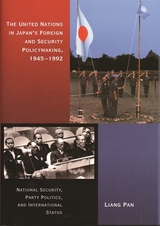 The United Nations in Japan's Foreign and Security Policymaking, 1945-1992: National Security, Party Politics, and International Status
Liang Pan
Harvard University Press, 2005 In the mid-1950s, as part of Tokyo's goal of reinstating Japan as a full member of the international community, Japan sought and gained admittance to the United Nations. Since then, it has been a proactive member and a generous financial contributor to the organization. This study focuses on postwar Japan's foreign policy making in the political and security areas, the core UN missions. It analyzes these two policy arenas from three perspectives—international political structure, domestic political organization, and the psychology of policymakers.
The intent is to illustrate how policy goals forged by national security concerns, domestic politics, and psychological needs gave shape to Japan's complicated and sometimes incongruous policy toward the UN since World War II. In contrast to the usual emphasis on the role of the foreign-policy bureaucracy, however, the author argues that we must view the bureaucracy as functioning within a larger framework of party politics and interactions among government agencies, political parties, and other actors associated with these parties. The last part of the book addresses the psychological aspect of Japan's UN policymaking in an effort to elucidate the role of national prestige in generating Japanese policy toward the UN.
 The United States and China
Arnold Xiangze Jiang
University of Chicago Press, 1988 In 1899, the United States declared the Open Door policy, proclaiming its commitment to the preservation of China's national integrity. A year later, the United States helped to quash the Boxer rebellion in Peking, a revolt which had threatened American business interests. Of these two contradictory aims displayed by U.S. foreign policy—generous friendship and aggressive self-interest—it is the latter that has prevailed and defined American policy toward China, maintains Chinese historian Arnold Xiangze Jiang.
The United States and China is the first comprehensive study in English of the tumultuous history of Sino-American relations from a Chinese perspective. Jiang critically examines U.S. foreign policy toward China from the eighteenth century to the Reagan-Deng years, illustrating how America's presence, influence, and pressure have shaped the history and politics of China. At the same time, Jiang's account is an illuminating and insightful synthesis of Chinese historiography since 1949—history as it has been taught in the People's Republic of China.
The United States and China: Fourth Edition, Revised and Enlarged
John King Fairbank
Harvard University Press, 1983 For two generations scholars and general readers have looked to John King Fairbank’s The United States and China for knowledge and insights about China. In this fourth edition, enlarged, he includes a new preface and an epilogue that brings the book up to date through the events of 1982. He has also updated the vast bibliography and both indexes. This book stands almost alone as a history of China, an analysis of Chinese society, and an account of Sino–American relations, all in brief compass.
The older portions of the book still sparkle, and they have been refined by the latest scholarship and the author’s own observations in the People’s Republic of China. And many photographs, especially chosen by John and Wilma Fairbank, show a changing land and its inhabitants.
The United States and Cuba: Hegemony and Dependent Development, 1880–1934
Jules Robert Benjamin
University of Pittsburgh Press, 1977 From its independence from Spain in 1898 until the 1960s, Cuba was dominated by the political and economic presence of the United States. Benjamin studies this unequal relationship through 1934, by examining U.S. trade, investment, and capital lending; Cuban institutions and social movements; and U.S. foreign policy. Benjamin convincingly argues that U.S. hegemony shaped Cuban internal politics by exploiting the island's economy, dividing the nationalist movement, co-opting Cuban moderates, and robbing post-1933 leadership of its legitimacy.
The United States and Cultural Heritage Protection in Japan (1945-1952)
Nassrine Azimi
Amsterdam University Press, 2019 One of the untold stories of the American military occupation of Japan, from 1945 to 1952, is that of efforts by the Arts and Monuments Division of the Supreme Commander for the Allied Powers (SCAP), for the preservation of Japan’s cultural heritage. While the role of Allies after WWII in salvaging the cultural heritage of Europe has recently become better known, not much is written of the extraordinary vision, planning and endeavors by curators and art specialists embedded in the US military and later based in Tokyo, and their peers and political masters back in Washington D.C. - all of whom ensured that defeated Japan’s cultural heritage was protected in the chaos and misery of post-war years.
 The United States and India, Pakistan, Bangladesh: Third Edition
W. Norman Brown
Harvard University Press, 1972 The first edition of this work appeared in 1953. The Foreign Service Journal greeted it as a "basic work" and the New York Times Book Review hailed it as "unquestionably the best and most balanced account of India and Pakistan."
The second edition appeared in 1963 and received an equally warm welcome. The Times of India said, "It provides the historical perspective, and discusses the present-day social, economic, and political problems with knowledge, sympathy, and acumen."
Between 1963 and 1972 the two nations of India and Pakistan made a number of important governmental, political, economic, and cultural changes. They had to meet crises caused by forces of nature as well as crises originating in their own institutions. Democratic processes advanced in India; they were repudiated in Pakistan and the repudiation led to the civil war in East Pakistan and the creation of Bangladesh. W. Norman Brown covers all of this and more in his fresh look at the subcontinent.
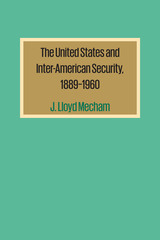 The United States and Inter-American Security, 1889–1960
By J. Lloyd Mecham
University of Texas Press, 1961 Of the several regional arrangements that function within the United Nations, the most elaborate in organization and function is the Organization of American States. Although the United Nations holds the primary responsibility for preserving international peace, its charter concedes virtual autonomy to regional arrangements in dealing with matters considered appropriate for regional action. This latitude stimulated a trend toward regionalism which eventually posed the important question of how to preserve legitimate regionalism like Pan-Americanism without impairing the essential overall authority of the United Nations. Following an introductory description of all existing regional arrangements, this comprehensive case study examines every aspect of security cooperation in the Western Hemisphere in the mid-twentieth century: the historical origins and development of the inter-American system; the perfecting of the security structure; and, most important, the functioning of the system under test by controversies among the member nations, and by two world wars, the Korean emergency, and the aggressive threats of international Communism. Particular attention is given to the Cuban situation. This volume was the first to recognize, boldly and imaginatively, the overwhelming influence wielded in the OAS by the powerful and wealthy United States. This elastic association of one Great Power and twenty small states, based on a mutuality of interests and a common devotion to the principles of civilized international behavior, can be said to have reached full maturity in 1948 with the adoption of the OAS charter, which articulated the goals toward which it had been striving for fifty-eight years: sovereign equality, nonintervention, and consultation for the peaceful solution of disputes and for hemisphere defense. Ironically, just when the Good Neighbor Policy and the rise of Hitler seemed to have cemented inter-American relations, breaks in the solidarity began to appear. World War II produced new forces destined to profoundly alter the bases and objectives of inter-American cooperation. The “be good” policy began to change to a “do good” policy, and in diplomatic discussions, economic measures began to eclipse those concerned with peril to the peace and security of the hemisphere.
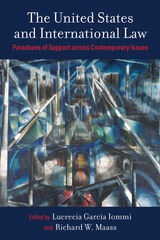 The United States and International Law: Paradoxes of Support across Contemporary Issues
Lucrecia García Iommi and Richard W. Maass
University of Michigan Press, 2022 The United States spearheaded the creation of many international organizations and treaties after World War II and maintains a strong record of compliance across several issue areas, yet it also refuses to ratify major international conventions like the UN Convention on the Law of the Sea and the Convention on the Elimination of All Forms of Discrimination Against Women. Why does the United States often seem to support international law in one way while neglecting or even violating it in another? The United States and International Law: Paradoxes of Support across Contemporary Issues analyzes the seemingly inconsistent U.S. relationship with international law by identifying five types of state support for international law: leadership, consent, internalization, compliance, and enforcement. Each follows different logics and entails unique costs and incentives. Accordingly, the fact that a state engages in one form of support does not presuppose that it will do so across the board. The contributors to this volume examine how and why the United States has engaged in each form of support across twelve issue areas that are central to twentieth- and twenty-first-century U.S. foreign policy: conquest, world courts, war, nuclear proliferation, trade, human rights, war crimes, torture, targeted killing, maritime law, the environment, and cybersecurity. In addition to offering rich substantive discussions of U.S. foreign policy in each of these areas, their findings reveal patterns across the U.S. relationship with international law that shed light on behavior that often seems paradoxical at best, hypocritical at worst. The results help us understand why the United States engages with international law as it does, the legacies of the Trump administration, and what we should expect from the United States under the Biden administration and beyond.
 The United States and Italy: Third Edition, Enlarged
H. Stuart Hughes
Harvard University Press, 1979 When the first edition of this book was published, the Christian ScienceMonitor called it "one of the mostconcise and informative books toappear on Italy since the end of Fascism." Thoroughly revised and updated, this third edition insures thatProfessor Hughes' work will retain itspreeminence as the best single introduction to contemporary Italy.
Professor Hughes outlines the geographic, economic, and psychological factors that have conditionedItaly's development, and reviews thetraditional contacts between Italy andthe United States, in particular theimmigration of Italians to this country. The chapters on Italy's historicaldevelopment interpret the trends andforces--the "legacy" of Fascism,anti-Fascism, the Second WorldWar--that still affect Italy today.Hughes' treatment of Italy's cultural,economic, and international status issuccinct and stimulating.
Two new chapters have been added for this third edition, dealing with the problems produced by the country's rapid industrial growth. The first situates the new Italy in its ecological and social context, delineating the stresses that have resulted from rapid change, among them political terrorism and the protest movements of women and of youth. The second assesses the transformation of Italian public life that the leading Eurocommunist party in the Westernworld has brought about.
The United States and Latin America in the 1980s
Kevin J. Middlebrook
University of Pittsburgh Press, 1986 Major political and economic events of the 1980s such as the international debt crisis, the 1982 Falklands War, the return to democratic rule in a number of countries, and the prolonged crisis in Central America, focused great attention on the U.S. and its dealings in Latin America. In this volume, experts from Latin America, the United States and Europe offer profound insights on the state of U.S.-Latin American relations, external debt and capital flows, trade relations, democracy, human rights, migration, and security during the 1980s.
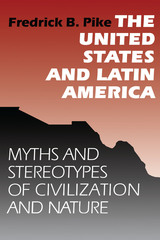 The United States and Latin America: Myths and Stereotypes of Civilization and Nature
By Fredrick B. Pike
University of Texas Press, 1992 The lazy greaser asleep under a sombrero and the avaricious gringo with money-stuffed pockets are only two of the negative stereotypes that North Americans and Latin Americans have cherished during several centuries of mutual misunderstanding. This unique study probes the origins of these stereotypes and myths and explores how they have shaped North American impressions of Latin America from the time of the Pilgrims up to the end of the twentieth century. Fredrick Pike's central thesis is that North Americans have identified themselves with "civilization" in all its manifestations, while viewing Latin Americans as hopelessly trapped in primitivism, the victims of nature rather than its masters. He shows how this civilization-nature duality arose from the first European settlers' perception that nature—and everything identified with it, including American Indians, African slaves, all women, and all children—was something to be conquered and dominated. This myth eventually came to color the North American establishment view of both immigrants to the United States and all our neighbors to the south.
The United States and Latin America: The New Agenda
Victor Bulmer-Thomas
Harvard University Press, 1999 The end of the Cold War removed hemispheric security from the top of the agenda of U.S.–Latin American relations. Democracy, trade and investment, drugs, and migration rose in importance. Pressures to eliminate the anachronistic U.S. embargo on Cuba increased. The new agenda also includes Latin America’s growing ties to the countries of the European Union and other regions.
This book contains fifteen essays by distinguished U.S., Latin American, and European scholars on each of these issues, framed by overviews of the changing historical context from the nineteenth century to the end of the Cold War. Authors include such notables as Harvard scholars John Coatsworth, Jorge Domínguez, and Marcelo Suárez-Orozco; European academics such as editors James Dunkerley and Victor Bulmer-Thomas; and Latin American intellectuals such as Eduardo Gamarra and Rodolfo Cerdas-Cruz.
 The United States and Malaysia
James W. Gould
Harvard University Press, 1969 This volume, a discerning examination of what might be termed Greater Malaysia, is the first comprehensive analysis of American-Malaysian relations and Malaysian foreign policy. A strategic geographic position and rich natural resources lend obvious importance to this region, which encompasses Malaysia, Singapore, and Brunei. But it is especially significant for its extraordinary political, cultural, and economic accomplishments.Achieving a peaceful transition from British colonies to independence, Malaysia and Singapore formed strong democratic governments and assumed an increasingly responsible role in the international community. The Malay, Chinese, and Indian residents of this area are a fine example of three communities of differing race, religion, and way of life existing together in harmony and cooperation. And the economic system, a successful combination of free enterprise and an extensive social welfare program, continues its stable development.Mr. Gould introduces his work with a geographic description of the lands, a lively ethnographic portrait of each of the three major racial communities, and a brief history of the numerous cultures that have had an impact on the Malaysian peoples. He then examines the governments of Malaysia, which have the problem of "creating a nation out of a multi-racial society in which communalism and local interests are far stronger than the sense of nationalism." Proceeding to the larger problem of establishing a Malaysian nation, he analyzes the forces promoting unity and disunity.Surveying Malaysia's economic progress, the author notes its dependence on the United States, the biggest buyer of Malaysia's rubber and tin, and he projects sustained economic growth. He then discusses Malaysia's regional and international relations, outlining those factors that influence its foreign policy. Concluding with a perceptive interpretation of the United States's connection to the area, he highlights the long history of friendship; the economic interdependence; the American commitment to help Malaysia maintain its political independence and further develop its viable economy; and recent aid and political relations.
The United States and Mexico
Josefina Zoraida Vazquez and Lorenzo Meyer
University of Chicago Press, 1987 Josefina Zoraida Vazquez and Lorenzo Meyer recreate, from a distinctly Mexican perspective, the dramatic story of how one country's politics, economy, and culture have been influenced by its neighbor. Throughout, the authors emphasize the predominance of the United States, the defensive position of Mexico, and the impact of the United States on internal Mexican developments.
 The United States and Poland
Piotr S. Wandycz
Harvard University Press, 1980 The United States and Poland adds a new dimension to the scholarship of America's international relations. Piotr Wandycz presents a comprehensive picture of the changing relationships between the United States and Poland over two hundred years.
This work is, as Wandycz writes, both a survey and a synthesis. Because he believes that an understanding of the history of Poland is necessary in order to appreciate the complex nature of its involvement with the United States, he provides a thorough analysis of Poland's internal development, concentrating on the twentieth century. He also carefully places American-Polish history in the broader context of changing East-West relations. Finally, he speculates on the future between the two countries as detente unfolds and surprising happenings like the election of a Polish Pope occur.
Ultimately, Wandycz acknowledges, the American-Polish relationship has been one-sided, even more so than is normal in contacts between great and small powers. “One must not imagine,” he writes, “that Poland has been on the minds of American foreign policy makers consistently...but if one thinks of Poland in the context of East Central Europe, her significance increases dramatically.” This book provides a necessary history and evaluation of a nation state once dominant in Europe and now searching for an appropriate role.
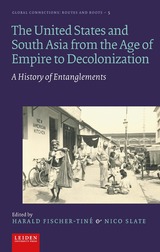 The United States and South Asia from the Age of Empire to Decolonization: A History of Entanglements
Harald Fischer-Tiné
Leiden University Press, 2023 The contributions assembled in this volume present cutting-edge research that examines the network of Indo-American interconnections over a wider time frame. The case studies stretch into the early decades of the American republic hinting at a longer history of mutual influence and exchange, beyond the registers of ‘the American century’ of globalization. By bringing together academics working across disciplines ranging from history to cultural and literary studies, comparative religion, political science and sociology, this volume thus foregrounds and historicizes the complex, multi-sited, polyvalent nature of the Indo-US encounter. At the same time, the book explore the possibilities of methodologically engaging with established categories—such as the nation, the imperial and Empire—and test alternative typologies to better understand this encounter. Taken together, our authors reconstruct the myriad ways in which Americans and Indians have engaged with each other through trade, diplomacy, intellectual comradeship, missionary evangelism and revolutionary fervor.
 The United States and the Andean Republics: Peru, Bolivia, and Ecuador
Fredrick B. Pike
Harvard University Press, 1977 Analyzing the political culture of the Andean republics of Peru, Bolivia, and Ecuador and of the United States, Fredrick Pike finds in their relationships deep divergencies in values and goals. Andeans, he shows, have traditionally viewed with suspicion the tenets associated with liberal democracy, secularism, and individualistic capitalism. In a detailed study of Andean politics, economics, social classes, and cultural patterns in the nineteenth and twentieth centuries, Pike determines that revolutionary ideology often merely masked the ambitions of aspiring elites anxious to retain the traditional order but wishing to wrest its advantages from incumbent elites. He shows the appeal of Marxism and of recent external-domination, internal-dependency theories, as well as the basic conservatism of land-reform programs and approaches to the "Indian problem."
Pike also speculates on whether an "iron law of dependency" is involved in Andean relations with the United States. He discusses the role of multinational corporations and the increasing "privatization of dependency." In the emerging postmodern era, Pike suggests, the values of Western-style modernity are even less viable in Andean America and indeed may not be able to survive in the United States.
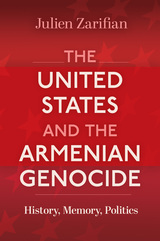 The United States and the Armenian Genocide: History, Memory, Politics
Julien Zarifian
Rutgers University Press, 2024 During the first World War, over a million Armenians were killed as Ottoman Turks embarked on a bloody campaign of ethnic cleansing. Scholars have long described these massacres as genocide, one of Hitler’s prime inspirations for the Holocaust, yet the United States did not officially recognize the Armenian Genocide until 2021.
This is the first book to examine how and why the United States refused to acknowledge the Armenian Genocide until the early 2020s. Although the American government expressed sympathy towards the plight of the Armenians in the 1910s and 1920s, historian Julien Zarifian explores how, from the 1960s, a set of geopolitical and institutional factors soon led the United States to adopt a policy of genocide non-recognition which it would cling to for over fifty years, through Republican and Democratic administrations alike. He describes the forces on each side of this issue: activists from the US Armenian diaspora and their allies, challenging Cold War statesmen worried about alienating NATO ally Turkey and dealing with a widespread American reluctance to directly confront the horrors of the past. Drawing from congressional records, rare newspapers, and interviews with lobbyists and decision-makers, he reveals how genocide recognition became such a complex, politically sensitive issue.
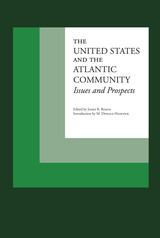 The United States and the Atlantic Community: Issues and Prospects
Edited by James R. Roach
University of Texas Press, 1966 The restiveness among some members of the North Atlantic Treaty Organization as to its structure and functions was an indication not of the failure of NATO, but of a need for a new adjustment to the changes that had developed in world conditions since the organization was established. Such was the consensus underlying the comments of five eminent statesmen and political theorists in a series of lectures delivered at the University of Texas in the spring of 1966 on the general theme of “The United States and the Atlantic Community: Issues and Prospects.” The grave crisis of confidence in the Atlantic Community resulted, ironically, from the success of NATO in combining the resources of thirteen European states with those of Canada and the United States in a common achievement of peace, economic stability, and security in the face of the postwar threat from the Soviet Union. Now that these objectives are obtained, one argument ran, NATO is no longer needed. The Soviet threat still exists, went another, and seems to be dispelled only because of the presence of NATO; what is needed is revision of policies and functions of the organization to fit new conditions. The changes in the nature of international relations in the two decades after World War II were of two kinds: those inherent in the world international situation—the economic recovery of Europe (which brought new urgency to the desire for more independence from the United States), the disintegration of European colonial empires, the softened aspect of the Soviet threat, and the great advances in modern technology; and those that depended upon policy decisions—whether Europe should be a confederacy (as advocated by De Gaulle) or a federal union (as advocated by Jean Monnet) and what should be the international policy of a united Europe on such issues as a third force between the United States and Russia, unified or separate approaches to the East and the West, German unity, and military security. A consideration of what these changes implied for the United States was the purpose of the series of papers collected in this volume. The names of the authors and the titles of their papers indicate the variety of views and interests expressed and the scope of the discussion: Henry A. Kissinger, Professor of Government at Harvard, “NATO: Evolution or Decline” André Philip, Professor of Economics at the Sorbonne, “The Atlantic Economy: Partners and Rivals” Hans Speier, member of the RAND Corporation Council, “Germany: The Continuing Challenge” Fritz Erler, a leader of the German Social Democratic Party, “Western Europe, Eastern Europe, and the Soviet Union” John J. Mccloy, former World Bank president and former U.S. military governor and high commissioner for Germany, “American Interests and Europe’s Future.”
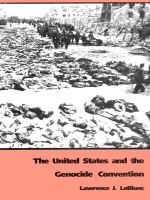 The United States and the Genocide Convention
Lawrence J. LeBlanc
Duke University Press, 1991 In this definitive study, Lawrence J. LeBlanc examines the nearly forty-year struggle over ratification of the Genocide Convention by the United States. LeBlanc’s analysis of the history of the convention and the issues and problems surrounding its ratification sheds important light on the process of treaty ratification in the United States and on the role of American public opinion and political culture in international human rights legislation. Drawing on case studies of genocide committed since World War II, the author also confronts the strengths and weaknesses of international adjudication as a whole.
Adopted by the United Nations General Assembly in 1948 in response to the atrocities committed by the Nazis before and during World War II, the Genocide Convention was finally made law by the United States Senate in 1988 contingent upon a series of “conditions”—known as the “Lugar-Helms-Hatch Sovereignty Package”—which, LeBlanc suggests, markedly weakened the convention. Through careful analysis of the bitter debates over ratification, LeBlanc demonstrates that much of the opposition to the convention sprang from fears that it would be used domestically as a tool by groups such as blacks and Native Americans who might hold the U.S. accountable for genocide in matters of race relations.
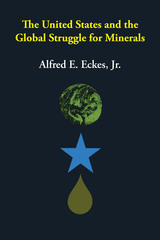 The United States and the Global Struggle for Minerals
By Alfred E. Eckes, Jr.
University of Texas Press, 1979 In 1973–1974 soaring commodity prices and an oil embargo alerted Americans to the twin dangers of resource exhaustion and dependence on unreliable foreign materials suppliers. This period seemed to mark a watershed in history as the United States shifted from the era of relative resource abundance to relative materials scarcity. Alfred E. Eckes’s comprehensive study shows that resource depletion and supply dislocations are not concerns unique to the 1970s. Since 1914, the quest for secure and stable supplies of industrial materials has been an important underlying theme of international relations and American diplomacy. Although the United States has been blessed with a diversified materials base, it has pursued a minerals strategy designed to exploit low-cost, high-quality ores abroad. Eckes demonstrates how this policy has led to official protection for overseas private investments, involving a role for the Central Intelligence Agency. Some modern historians have neglected the importance of resources in shaping diplomacy and history. This book, based on a vast variety of unutilized archival collections and recently declassified government documents, helps to correct that imbalance. In the process it illuminates an important and still timely aspect of America’s global interests.
 The United States and the Pacific: History of a Frontier
Jean Heffer
University of Notre Dame Press, 2002 "What Jean Heffer presents here is a balanced overview of United States expansion into the Pacific region from 1784, the start of our China trade, almost to the present." --The Journal of American History
Appearing for the first time in English, this award-winning book is a masterpiece of scholarship that reads like an adventure story. In The United States and the Pacific, Jean Heffer offers a history of the Pacific as a "frontier" of the United States using economics, politics, and culture as his central areas of consideration.
Heffer remarks that, "it is often said nowadays that the Pacific will become the center of the world in the 21st century." While many studies have analyzed specific zones or regions within the Pacific, The United States and the Pacific is one of the first to consider the whole of this vast ocean and its coasts as a single unit of study. In broadening the scope of analysis, one of Heffer's primary aims is to expand American understanding of the term "frontier" to include the Pacific and its nations.
Heffer focuses on three major chronological periods. The first period stretches from 1784, the year the first ship flying the American flag reached China, to 1867, the eve of the Civil War. During this period, America's presence was expanding throughout the entire ocean. The second period, from 1868 to Pearl Harbor in 1941, witnessed a simultaneous contraction of the area within which various American interests were active, and a gradual integration of the frontier region. Finally, World War II marks the beginning of the third period, which concludes in 1994, during which, Heffer argues, the entire Pacific becomes an "American lake" and the former frontier begins to disappear.
The United States and the Pacific is populated with fascinating characters, including whalers, missionaries, investors, sailors, diplomats, and merchant marines. Heffer's provocative and challenging history of the Pacific as a "frontier" entertains as it informs.
JEAN HEFFER teaches at the Ecole Deshautesetudes en Sciences Sociales in France
----------
"Wilson's translation is polished and lucid, and Heffer handles the complexities of his story adroitly; his historical synthesis will introduce a new generation of readers to a region certain to play an increasingly important role in world affairs." --Publishers Weekly, December 24, 2001
"Heffer offers striking details and a conceptually expansive text. No equivalent exists on this topic, and we are fortunate to have this work translated for a wide readership, both scholarly and general."--Library Journal, 2/15/02
"[A] strikingly successful narrative. . . . One of the greatest strengths of Heffer's book is the way it narrates the domestic American story of Asian immigration . . . consistently sound judgement characterizes the book. Perhaps the most rewarding part of Heffer's book, however, is the section which brings the story almost to the present day, again distinguished by its clearsightedness and sound judgement." --Times Literary Supplement, April 26, 2002
"The book is a solid contribution to the field of Pacific Studies because of its theoretical perspective, which is innovative in its geographical scope thus offering a useful sythesis for students and scholars in history and other social sciences."--Journal of Economic History, volume 62, no. 3 September 2002
"The publication of an English translation of this unique treatise is a welcome and important addition to our understanding of how the United States was shaped by the Pacific Ocean and Pacific rim, and, conversely, how the United States shaped that oceanic world, its islands, and littorals."--International History Review, June 2003
 The United States and the Second Hague Peace Conference: American Diplomacy and International Organization, 1899–1914
Calvin DeArmond Davis
Duke University Press, 1975 Permanent organizations of the society of nations began with the Second Hague Peace Conferences of 1899 and 1907 and the Permanent Court of Arbitration founded by the Peace Conference of 1899. The establishment of the League of Nations by the Paris Peace Conference of 1919 began a second period in the history of international organization. A third period began in 1945 when the United Nations replaced the League of Nations. In his prize-winning book, The United States and the First Hague Peace Conference, Professor Davis told the story of American participation in the Peace Conference of 1899. In the present volume he focuses on the role of the United States in the Peace Conference of 1907, but also describes the connections between that conference and the Pan-American Conferences, the Geneva Conference of 1906, the London Naval Conference and may other important relations of the era. He concludes this new book with a discussion of connections between the internationalism of the Hague period and the League of Nations and the United Nations.
 The United States and the Treaty Law of the Sea
Henry Reiff
University of Minnesota Press, 1959
The United States and the Treaty Law of the Sea was first published in 1959. Minnesota Archive Editions uses digital technology to make long-unavailable books once again accessible, and are published unaltered from the original University of Minnesota Press editions.
The entire period of the Republic is covered in this account of United States participation in treaties which seek to regulate peacetime use of the sea, its resources, and the air space over it. Noting a revival of maritime interest in America, Professor Reiff describes current uses and abuses of the sea with respect to transportation, communications, exploitation of products and energy, waste disposal, and recreation. He relates developments in economies, technology, social science, and the natural sciences to the expanding web of treaty law, and reports some of the discussion and actions which took place at the United Nations Conference on Sea Law in the spring of 1958.
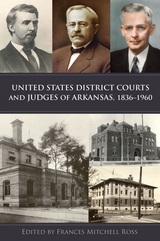 United States District Courts and Judges of Arkansas, 1836–1960
Frances Mitchell Ross
University of Arkansas Press, 2016 The essays in United States District Courts and Judges of Arkansas, 1836–1960—one each for a judge and his decisions—come together to form a chronological history of the Arkansas judicial system as it grew from its beginnings in a frontier state to a modern institution.
The book begins with statehood and continues with Congress’s decision to expand jurisdiction of the original 1836 District Court of Arkansas to include the vast Indian Territory to the west. The territory’s formidable size and rampant lawlessness brought in an overwhelming number of cases. The situation was only somewhat mitigated in 1851, when Congress split the state into eastern and western districts, which were still served by just one judge who travelled between the two courts.
A new judgeship for the Western District was created in 1871, and new seats for that court were established, but it wasn’t until 1896 that Congress finally ended all jurisdiction of Arkansas’s Western District Court over the Indian Territory.
Contributors to this collection include judges, practicing attorneys, academics, and thoughtful and informed family members who reveal how the judges made decisions on issues involving election laws, taxes, civil rights, railroads, liquor and prohibition, quack medicine, gangsters, bankruptcy, personal injury, the draft and Selective Service, school desegregation, prisons, and more. United States District Courts and Judges of Arkansas, 1836–1960 will be of value to anyone interested in Arkansas history—particularly Arkansas legal and judicial history as it relates to the local and national issues that came before these judges.
This project was supported in part by the United States District Court for the Eastern District of Arkansas and the United States District Court for the Western District of Arkansas.
 The United States Governed by Six Hundred Thousand Despots: A True Story of Slavery
John Swanson Jacobs
University of Chicago Press, 2024 Lost on the other side of the world since 1855, the story of John Swanson Jacobs finally returns to America. This student edition reproduces his narrative in full and presents it on its own without any editorial or biographical apparatus.
For one hundred and sixty-nine years, a first-person slave narrative written by John Swanson Jacobs—brother of Harriet Jacobs—was buried in a pile of newspapers in Australia. Jacobs’s long-lost narrative, The United States Governed by Six Hundred Thousand Despots, is a startling and revolutionary discovery. A document like this—written by an ex-slave and ex-American, in language charged with all that can be said about America outside America, untampered with and unedited by white abolitionists—has never been seen before. A radical abolitionist, sailor, and miner, John Jacobs has a life story that is as global as it is American. Born into slavery, by 1855 he had fled both the South and the United States altogether, becoming a stateless citizen of the world and its waters. That year, he published his life story in an Australian newspaper, far from American power and its threats. Unsentimental and unapologetic, Jacobs radically denounced slavery and the state, calling out politicians and slaveowners by their names, critiquing America’s founding documents, and indicting all citizens who maintained the racist and intolerable status quo.
Reproduced in full, this narrative—which entwines with that of his sister and with the life of their friend Frederick Douglass—here opens new horizons for how we understand slavery, race, and migration, and all that they entailed in nineteenth-century America and the world at large. To truly reckon with the lives of John Jacobs is to see with new clarity that in 1776, America embarked on two experiments at once: one in democracy, the other in tyranny.
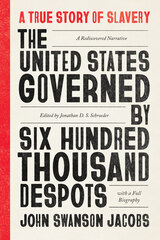 The United States Governed by Six Hundred Thousand Despots: A True Story of Slavery; A Rediscovered Narrative, with a Full Biography
John Swanson Jacobs
University of Chicago Press, 2024 Lost on the other side of the world since 1855, the story of John Swanson Jacobs finally returns to America. This comprehensive edition includes Jacobs's narrative in full alongside a full-length biography.
For one hundred and sixty-nine years, a first-person slave narrative written by John Swanson Jacobs—brother of Harriet Jacobs—was buried in a pile of newspapers in Australia. Jacobs’s long-lost narrative, The United States Governed by Six Hundred Thousand Despots, is a startling and revolutionary discovery. A document like this—written by an ex-slave and ex-American, in language charged with all that can be said about America outside America, untampered with and unedited by white abolitionists—has never been seen before. A radical abolitionist, sailor, and miner, John Jacobs has a life story that is as global as it is American. Born into slavery, by 1855, he had fled both the South and the United States altogether, becoming a stateless citizen of the world and its waters. That year, he published his life story in an Australian newspaper, far from American power and its threats. Unsentimental and unapologetic, Jacobs radically denounced slavery and the state, calling out politicians and slaveowners by their names, critiquing America’s founding documents, and indicting all citizens who maintained the racist and intolerable status quo.
Reproduced in full, this narrative—which entwines with that of his sister and with the life of their friend Frederick Douglass—here opens new horizons for how we understand slavery, race, and migration, and all that they entailed in nineteenth-century America and the world at large. The second half of the book contains a full-length, nine-generation biography of Jacobs and his family by literary historian Jonathan Schroeder. This new guide to the world of John Jacobs will transform our sense of it—and of the forces and prejudices built into the American project. To truly reckon with the lives of John Jacobs is to see with new clarity that in 1776, America embarked on two experiments at once: one in democracy, the other in tyranny.
 The United States in Central America, 1860–1911: Episodes of Social Imperialism and Imperial Rivalry in the World System
Thomas D. Schoonover
Duke University Press In a work of unprecedented scope, Thomas D. Schoonover combines exhaustive multicountry archival research with a sophisticated theoretical framework grounded in world systems theory to elucidate the relations between the United States and Central America in the late nineteenth and early twentieth centuries.
Schoonover’s archival research in Central America, Europe, and the United States encompasses public, business, organizational, and individual records. In analyzing this material, Schoonover applies a world systems theory approach with that of social imperialism and dependency theory to underscore the broad, multistate dimension of international affairs. In exploring the international history of Central America, Schoonover describes the role of personalities such as John C. Frémont, Otto von Bismarck, Theodore Roosevelt, Manuel Estrada Cabrera, and José Santos Zelaya; the impact of railroad building and canal projects; and the role of pan-Americanism, nationalism, racism, and anti-Americanism.
The United States in the World Economy
Edited by Martin Feldstein
University of Chicago Press, 1988 The United States in the World Economy offers the results of a conference organized by the National Bureau of Economics in 1987. The volume includes background papers prepared by nine academic economists, personal statements by individuals prominent in government and business, and summaries of the discussion that followed the presentations. Among the topics considered are foreign competition in Latin America and the Asian Pacific Rim, Third World debts, innovations in international financial markets, changing patterns of international investment, international capital flows, and international competition in goods, services, and agriculture. Prepared for a sophisticated but non-technical audience, these papers present complicated economic issues clearly, indicating the many ways in which the American economy influences and is influenced by economic events and conditions around the world.
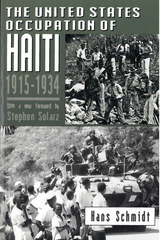 The United States Occupation of Haiti, 1915-1934
Schmidt, Hans
Rutgers University Press, 1995 "A good history of a sordid intervention that submitted a people to autocratic rule and did little for economic development." —The New York Times "From Schmidt we get the full details . . . of the brutal racist practices inflicted on the Haitians for nearly all of the nineteen-year American presence in the country." —American Historical Review "The only thoroughgoing study of one of the more discreditable American interventions overseas." —Journal of Interdisciplinary History "Should become the standard work on the subject. . . .required reading for specialists in Caribbean studies and U.S.-Latin American relations." —Choice
"A valuable addition to Latin American and U.S. historiography." —Library Journal
"Schmidt sees American racism, bondholders cultures, the technocratic side of Progressivism, and the National City Bank looting of Haiti as the factors motivating Wilson's 1915 invasion....As a detailed case study in an exceptional manifestation of U. S. imperial control the book will attract a readership beyond students of Caribbean history." —Kirkus
"An important and well-documented account....an interesting case study in twentieth-century imperialism. Schmidt sees the occupation of Haiti as part of a general tendency in American foreign policy...Schmidt analyses in detail the mechanics of the invasion, and discusses the actions, attitudes, and policies of the U.S. administration....A model of academic elegance." —Caribbean Studies
"All the more convincing because the author has used previously inaccessible archive materials." —Journal of American History
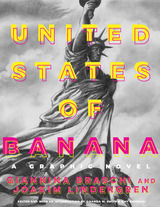 United States of Banana: A Graphic Novel
Giannina Braschi and Joakim LindengrenEdited and with an introduction by Amanda M. Smith and Amy Sheeran
Ohio State University Press, 2021 “I was a monument to immigration—now I’m a border control cop.” So admits the Statue of Liberty in Giannina Braschi’s United States of Banana, a rollicking and nakedly political allegory of US imperialism and Puerto Rican independence. Illustrated by Swedish comic book artist Joakim Lindengren and based on Braschi’s epic manifesto by the same title, the story takes us along on the madcap adventures of Zarathustra, Hamlet, and Giannina herself as they rescue the Puerto Rican prisoner Segismundo from under the skirt of the Statue of Liberty. Throughout their quest, the characters debate far-ranging political and philosophical subjects, spanning terrorism, global warming, mass incarceration, revolution, and love. The Marx Brothers, Pablo Neruda, Barack Obama, Disney characters and more make appearances in this stirring call to overthrow empire, liberate the imprisoned masses, and build a new country rooted in friendship, art, poetry, and laughter.
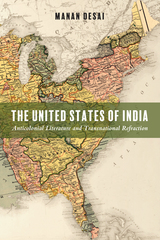 The United States of India: Anticolonial Literature and Transnational Refraction
Manan Desai
Temple University Press, 2020 The United States of India shows how Indian and American writers in the United States played a key role in the development of anticolonial thought in the years during and immediately following the First World War. For Indians Lajpat Rai and Dhan Gopal Mukerji, and Americans Agnes Smedley, W.E.B. Du Bois, and Katherine Mayo, the social and historical landscape of America and India acted as a reflective surface. Manan Desai considers how their interactions provided a “transnational refraction”—a political optic and discursive strategy that offered ways to imagine how American history could shed light on an anticolonial Indian future. Desai traces how various expatriate and immigrant Indians formed political movements that rallied for American support for the cause of Indian independence. These intellectuals also developed new forms of writing about subjugation in the U.S. and India. Providing an examination of race, caste, nationhood, and empire, Desai astutely examines this network of Indian and American writers and the genres and social questions that fomented solidarity across borders.
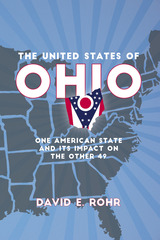 The United States of Ohio: One American State and Its Impact on the Other Forty-Nine
David E. Rohr
Ohio State University Press, 2019 Electoral significance has always distinguished the small northern state sandwiched between Lake Erie and the Ohio River. Only twice since the beginning of the twentieth century has Ohio failed to pick the candidate who ultimately won the presidential election. But presidential elections are only part of the Ohio story. That’s because the state has always been an innovator, an incubator, and a bellwether for the American experience. In a unique look at Ohio, David E. Rohr chronicles key stories that come from the Buckeye State and the remarkable effect Ohio’s development has had on the larger country.
The United States of Ohio covers little-known facts about Ohio, such as how the state was the birthplace of both the National Football League and Major League Baseball and how it was Ohioans who led efforts toward racial integration in both sports. Readers will learn what makes the state a manufacturing and agricultural powerhouse—with both the largest tire company, Akron’s Goodyear, and the largest consumer products company, Cincinnati’s Proctor & Gamble, based there. The state grows, processes, and builds on a level that far outpaces the size of its population or expanse of its borders. And it is the birthplace of many prominent US figures—from Thomas Edison to John Glenn to Neil Armstrong. From sports to a century’s worth of entertainment superstars to aviation and space exploration, Ohio’s best have made for America’s greatest stories—all captured here in a look at the Buckeye State and its impact on the other forty-nine.
United States Oil Policy, 1890-1964: Business and Government in Twentieth Century America
Gerald D. Nash
University of Pittsburgh Press, 1968 Gerald D. Nash offers a balanced survey on American oil policies over a seventy-five year span, and places in historical perspective the controversies of government- business relations that have resulted from oil depletion and surplus allowances. Focusing on a single industry, Nash provides a valuable study on the government's role in private economic activity. He concludes that Americans have given the government great power in regulating the nation's industries, and in particular, as they relate to defense considerations, and the laws of supply and demand within American borders, and internationally.
 The United States Response to Turkish Nationalism and Reform, 1914-1939
Roger R. Trask
University of Minnesota Press, 1971 The United States Response to Turkish Nationalism and Reform, 1914-1939 was first published in 1971. Minnesota Archive Editions uses digital technology to make long unavailable books once again accessible, and are published unaltered from the original University of Minnesota Press editions. The history of Turkish-American relations in the early years of the twentieth century, before World War II, forms a significant part of the background necessary to an understanding of the present political importance to America of the Middle East. This book, after a brief introduction covering the period before 1914, analyzes in detail the course of relations between Turkey and the United States from the beginning of World War I to the start of World War II. The period which Professor Trask covers in this study was a critical time in both nations' histories. The relations between the two countries varied from cool neutrality (1914) to a rupture of formal ties (1917) to rapprochement (by 1939). Conditions affective Turkish-American contacts included two world wars, a major world depression, and, especially, a Turkish nationalist revolution under the leadership of Kemal Ataturk. Professor Trask analyzes the process of American accommodation to this revolution, with emphasis on diplomatic, political, economic, social, and cultural ties, and points out the implications for the balance of power during World War II and the cold war.
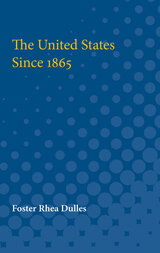 United States Since 1865
Foster Rhea Dulles
University of Michigan Press, 1969 In the wake of the Civil War, every aspect of American life was to be shaped anew by the energies of a nation now reborn. The remarkable story of the growth these energies achieved is told here—beginning with General Grant's historic ride into the little village of Appomattox and the Battle of Appomattox Court House, and taking the reader up through the extraordinary staccato of modern-day political events. In this newly expanded and completely up-to-date edition, Foster Rhea Dulles vividly depicts the individuals, episodes, and ideas that have guided the course of over a hundred years of American history: reconstruction in the South, the westward surge, Populism and Progressivism, the New Deal, the impact of the Vietnamese conflict, and the Negro revolution on the American conscience.The United States Since 1865 is a record not only of political and economic events, but of social and cultural developments as well. New directions in literature and the arts, the advent of Henry Ford's Model-T and pioneer motion picture theaters, the cultural élan brought to the White House during the Kennedy years—these too contributed to the making of modern America.Written for the general reader as well as the student of American history, this authoritative work—along with its companion volume, The United States to 1865—provides a highly readable and thoroughly up-to-date reassessment of America's heritage to her citizens and to the world.
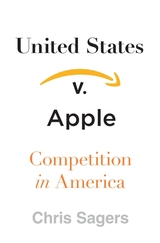 United States v. Apple: Competition in America
Chris Sagers
Harvard University Press, 2019 One of the most-followed antitrust cases of recent times—United States v. Apple—reveals an often-missed truth: what Americans most fear is competition itself.
In 2012 the Department of Justice accused Apple and five book publishers of conspiring to fix ebook prices. The evidence overwhelmingly showed an unadorned price-fixing conspiracy that cost consumers hundreds of millions of dollars. Yet before, during, and after the trial millions of Americans sided with the defendants. Pundits on the left and right condemned the government for its decision to sue, decrying Amazon’s market share, railing against a new high-tech economy, and rallying to defend beloved authors and publishers. For many, Amazon was the one that should have been put on trial. But why? One fact went unrecognized and unreckoned with: in practice, Americans have long been ambivalent about competition.
Chris Sagers, a renowned antitrust expert, meticulously pulls apart the misunderstandings and exaggerations that industries as diverse as mom-and-pop grocers and producers of cast-iron sewer pipes have cited to justify colluding to forestall competition. In each of these cases, antitrust law, a time-honored vehicle to promote competition, is put on the defensive. Herein lies the real insight of United States v. Apple. If we desire competition as a policy, we must make peace with its sometimes rough consequences. As bruising as markets in their ordinary operation often seem, letting market forces play out has almost always benefited the consumer. United States v. Apple shows why supporting cases that protect price competition, even when doing so hurts some of us, is crucial if antitrust law is to protect and maintain markets.
United States v. United Shoe Machinery Corporation: An Economic Analysis of an Anti-Trust Case
Carl Kaysen
Harvard University Press Carl Kaysen offers a penetrating economic analysis of the issues in the civil antitrust suit brought by the United States Government against the United Shoe Machinery Corporation under Sections 1 and 2 of the Sherman Act. Kaysen, who served as clerk to Judge Charles E. Wyzanski, Jr. of the U.S. District Court of Massachusetts for this case, provides background material on the technique of shoe machinery and shoe manufacture, on the history of the United Shoe Machinery, and on the Anti-Trust Laws.
 United States Welfare Policy: A Catholic Response
Thomas J. Massaro, SJ
Georgetown University Press, 2007 The Welfare Reform Act of 1996 drastically changed the delivery of social services in the United States for the first time in sixty years. More than a decade later, according to Catholic social ethicist Thomas Massaro, a disturbing gap exists between the laws we have enacted as a nation and the moral concerns we profess as a people. Massaro contends that ethicists too often focus on strictly theoretical concerns rather than engaging concrete social and political issues, while public policy experts are uncomfortable drawing ethical judgments about legislation. United States Welfare Policy takes a fresh approach to the topic by using Catholic social teaching as a lens through which to view contemporary American welfare policies, citing the tradition's emphasis on serving the needy—including a preferential option for the poor—and the common good. Massaro maintains that the most important outcome of welfare policy is not the cost-effectiveness of programs, but the well-being of individual families. The concluding analysis of this thoughtful study applies Catholic ethical concerns to specific aspects of welfare reform, including the funding mechanisms for the Temporary Assistance to Needy Families (TANF) program, work participation requirements affecting the bond between mothers and children, eligibility rules, the intrusion of family caps into reproductive decisions, and the imposition of disproportionate burdens upon particular demographic groups. Massaro offers possible alternatives in each case and, as the fight over reauthorization of the welfare act continues, he calls on Catholic churches and clergy and laity to take action and advocate publicly for a more ethical approach to welfare reform.
 United States-Japanese Relations: The 1970s
Priscilla Clapp and Morton H. Halperin
Harvard University Press, 1974 "This is clearly a time of significant transition in Japanese-American relations," Edwin O. Reischauer writes in his introduction to this timely and important book. "Are the prospects as alarming as some would argue, or is there more reason for hope?"
In the penetrating essays that form this volume, the flashpoints for trouble are exposed so that we can understand the causes for the "great uneasiness" in American-Japanese relations:increasing economic rivalry, the emergence of a multipolar world, America's new interest in better relations with China and Russia, Japanese economic decline, and projected Japanese political instability.It would be easier to deal with these problems if American and Japanese cultural and political styles were similar. But they are not, and the resulting lack of communication and response is a serious handicap to solving mutual problems. In their diplomatic relations the Japanese try to avoid political confrontation and prefer to negotiate by indirection. Then, too, American images of Japan are skewed by layers of government and bureaucracy. Finally, Japanese consensus politics leads to immobility when Americans want action. The writers, in pointing out these differences, indicate how confusing all this is to U.S. policymakers.
Despite these obstacles to friendship and understanding, a "cautious optimism" about the future pervades this book. The distinguished authors suggest a variety of ways to improve relations.Japan could and should take on more responsibility for Eastern stability and economic viability. In turn, the United States ought to recognize Japan as a major power with a large stake in Asia and to stress the complementarity of their economies.
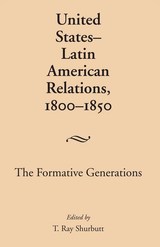 United States-Latin American Relations, 1800-1850: The Formative Generations
T. Ray Shurbutt
University of Alabama Press, 1991 Relations between the United States and the countries of Latin America have been characterized by misunderstandings based on language and culture, a lack of sustained commitment on the part of the United States, and, in some cases, incompetent diplomats. During the era when many of the Latin American countries discarded the yoke of colonial status, the young United States attempted to define itself culturally, economically, constitutionally, geographically, and diplomatically. As Latin American emerged from the crucible of revolution and international power politics, it was affected by—and in varying degrees affected—the United States and its desired position of leadership in the Western Hemisphere. To make sense of these relationships, this volume concentrates on Central America, Peru, Colombia, Argentina, Brazil, Chile, and Mexico. Describing the particular paths taken by each of the formation of relations with the United States, Shurbutt and his colleagues focus on the American diplomatic community and its effectiveness in tense political situations. Contributors in addition to the editor include Lawrence A. Clayton, Paul B. Goodwin, Eugene R. Huck, Phil Brian Johnson, Edward H. Moseley, Wesley P. Newton, Charles S. Stansifer, and Robert Kim Stevens.
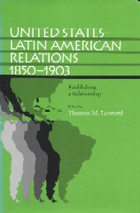 United States–Latin American Relations, 1850–1903: Establishing a Relationship
Edited by Thomas M. Leonard
University of Alabama Press, 1999 United States–Latin American Relations, 1850–1903 is a collection of essays that provide an in-depth analysis of the developing relationship between the Americas during the critical period from the Mexican War to the Panama Canal treaty of 1903. During the second half of the 19th century several forces in the United States, Latin America, and Europe converged to set the stage for the establishment of a more permanent relationship between the United States and Latin America. The key factors--security, economics, and modernization--created both commonalities and conflicts between and among regions. In this volume, scholars examine not only the domestic but also the geopolitical forces that encouraged and guided development of diplomatic relations in this rapidly changing period.
As the contributors note, by the end of the century, economic interests dominated the relationship that eventually developed. This period saw the building of a string of U.S. naval bases in Latin America and the Caribbean, the rapid industrialization of the United States and the development of a substantial export market, the entrance of many U.S. entrepreneurs into Latin American countries, and the first two inter-American conferences. By the century's end, the United States appeared as the dominant partner in the relationship, a perception that earned it the "imperialist" label.
This volume untangles this complex relationship by examining U.S. relations with Mexico, Cuba, Colombia, Central America, Peru, Argentina, Chile, Brazil, Uruguay, and Paraguay from the perspective of both the United States and the individual Latin American countries.
A companion volume to United States-Latin American Relations, 1800-1850: The Formative Generations, edited by T. Ray Shurbutt, this book establishes a historical perspective crucial to understanding contemporary diplomatic relations.
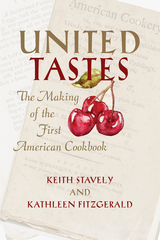 United Tastes: The Making of the First American Cookbook
Keith Stavely
University of Massachusetts Press, 2017 Winner of the 2017 Bruce Fraser Award from the Association for the Study of Connecticut History
The Library of Congress has designated American Cookery (1796) by Amelia Simmons one of the eighty-eight “Books That Shaped America.” Its recognition as “the first American cookbook” has attracted an enthusiastic modern audience of historians, food journalists, and general readers, yet until now American Cookery has not received the sustained scholarly attention it deserves. Keith Stavely and Kathleen Fitzgerald's United Tastes fills this gap by providing a detailed examination of the social circumstances and culinary tradition that produced this American classic.
Situating American Cookery within the post-Revolutionary effort to develop a distinct national identity, Stavely and Fitzgerald demonstrate the book's significance in cultural as well as culinary terms. Ultimately the separation between these categories dissolves as the authors show that the formation of “taste,” in matters of food as well as other material expressions, was essential to building a consensus on what it was to be American. United Tastes explores multiple histories—of food, cookbooks, printing, material and literary culture, and region—to illuminate the meaning and affirm the importance of America's first cookbook.
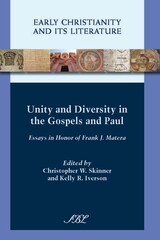 Unity and Diversity in the Gospels and Paul: Essays in Honor of Frank J. Matera
Christopher W. Skinner
SBL Press, 2012 This volume addresses the perennial issue of unity and diversity in the New Testament canon. Celebrating the academic legacy of Fr. Frank J. Matera, colleagues and friends interact with elements of his many important works. Scholars and students alike will find fresh and stimulating discussions that navigate the turbulent waters between the Gospels and Paul, ranging from questions of Matthew's so-called anti-Pauline polemic to cruciform teaching in the New Testament. The volume includes contributions from leading scholars in the field, offering a rich array of insights on issues such as Christology, social ethics, soteriology, and more. The contributors are Paul J. Achtemeier, Sherri Brown, Raymond F. Collins, A. Andrew Das, John R. Donahue, S.J., Francis T. Gignac, S.J., Michael J. Gorman, Kelly R. Iverson, Luke Timothy Johnson, Jack Dean Kingsbury, William S. Kurz, S.J., John P. Meier, Francis J. Moloney, S.D.B., Christopher W. Skinner, and Matt Whitlock.
Unity And Variety: A History of the Church in Devon and Cornwall
Nicholas Orme
University of Exeter Press, 1991
A collaborative history of the Church in a large, diverse and interesting region of England by six historians, ranging from Celtic and Saxon times, through the middle ages, Reformation, rise of Nonconformity and the Victorian era, down to the present day and encompassing all the main Christian denominations.
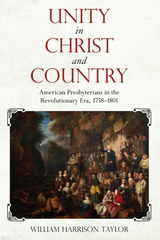 Unity in Christ and Country: American Presbyterians in the Revolutionary Era, 1758–1801
William Harrison Taylor
University of Alabama Press, 2017 Examines the interdenominational pursuits of the American Presbyterian Church from 1758 to 1801
In Unity in Christ and Country: American Presbyterians in the Revolutionary Era, 1758–1801, William Harrison Taylor investigates the American Presbyterian Church’s pursuit of Christian unity and demonstrates how, through this effort, the church helped to shape the issues that gripped the American imagination, including evangelism, the conflict with Great Britain, slavery, nationalism, and sectionalism. When the colonial Presbyterian Church reunited in 1758, a nearly twenty-year schism was brought to an end. To aid in reconciling the factions, church leaders called for Presbyterians to work more closely with other Christian denominations. Their ultimate goal was to heal divisions, not just within their own faith but also within colonial North America as a whole.
Taylor contends that a self-imposed interdenominational transformation began in the American Presbyterian Church upon its reunion in 1758. However, this process was altered by the church’s experience during the American Revolution, which resulted in goals of Christian unity that had both spiritual and national objectives. Nonetheless, by the end of the century, even as the leaders in the Presbyterian Church strove for unity in Christ and country, fissures began to develop in the church that would one day divide it and further the sectional rift that would lead to the Civil War.
Taylor engages a variety of sources, including the published and unpublished works of both the Synods of New York and Philadelphia and the General Assembly of the Presbyterian Church in the United States, as well as numerous published and unpublished Presbyterian sermons, lectures, hymnals, poetry, and letters. Scholars of religious history, particularly those interested in the Reformed tradition, and specifically Presbyterianism, should find Unity in Christ and Country useful as a way to consider the importance of the theology’s intellectual and pragmatic implications for members of the faith.
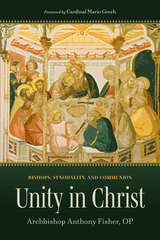 Unity in Christ: Bishops, Synodality, and Communion
Archbishop Anthony Fisher, OP
Catholic University of America Press, 2023 What does episcopal fraternity and communio look like? This central question is explored through the erudition and experience of Archbishop Anthony Fisher, Catholic Archbishop of Sydney, Australia. Unity in Christ, based upon a series of addresses given to the United States Conference of Catholic Bishops (USCCB) at their Special Assembly in 2022, delves into the themes associated with episcopal unity. By surveying the Christian tradition, beginning with the scriptures and then through various periods (Apostolic generation, patristic, scholastic, Vatican II, recent post Vatican II developments such as synodality) a coherent picture of episcopal togetherness is presented. What becomes clear is that unity among Christ’s disciples and their successors is not simply an ideal but rather a constitutive element of their office. They are called to love as Christ loved, expressed above all through genuine friendship with one another. The consequences of this fraternity and communio have implications in areas such as spirituality, preaching and fraternal correction, among others. This second feature, the implications of episcopal fraternity and communio, are explored through Archbishop Fisher’s twenty years of experience as a bishop of the Catholic Church. By providing concrete examples of lived episcopal fraternity and communio, Fisher offers a glimpse into both the challenges and fruits of living out Christ’s call that "they might all be one" (Jn 17:21).
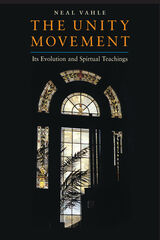 The Unity Movement: Its Evolution and Spiritual Teachings
Neal Vahle
Templeton Press, 2002 Prayer meetings held in 1889 in the Kansas City living room of Charles and Myrtle Fillmore were the beginning of what grew to be an international religious and educational movement. This book is an in-depth study of the people and beliefs that shaped it into one of the fastest growing movements of our time. Neal Vahle documents the lives of the spiritual visionaries who created, organized, and led the Unity movement: Myrtle Fillmore, the 40-year-old wife and mother who was inspired by a Christian Science practitioner to cure herself of tuberculosis; Charles Fillmore, who had planned a business career but found, through study, prayer, meditation, and dream analysis, that he had another calling; H. Emily Cady, a New York City homeopathic physician whose book on Unity teachings, Lessons in Truth, was published in 1901, and has sold more than 1.6 million copies; Lowell Fillmore, eldest son of Charles and Myrtle, who clarified and popularized Unity teaching; and the other descendants of Myrtle and Charles, each of whom made immeasurable contributions. He explores the key factors that led to the steady growth of the movement: the creation of the Unity School of Christianity; the development of Unity Village in Missouri; the evolution of "Silent Unity"; the publication program; the training of students; the development of centers and churches; and he presents and analyzes the controversies and debates within the organization. Vahle concludes the book with a look at the challenges facing the movement in the twenty-first century.
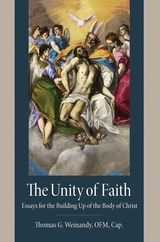 The Unity of Faith: Essays for the Building Up of the Body of Christ
Thomas G. Weinandy
Catholic University of America Press, 2024 In this volume, The Unity of Faith: Essays for the Building Up of the Body of Christ, Thomas G. Weinandy, OFM, Cap., has compiled a theologically significant medley of essays. The title is taken from Ephesians 4:11–13 (“And his gifts were … for building up the body of Christ, until we all attain to the unity of the faith and of the knowledge of the Son of God….”). The “unity of faith” in this book refers both to the interrelation between the truths of the faith, whether
Trinitarian, Christological, or ecclesiological, and to unity among those who hold the faith.
The first section deals with the Trinity, usually with ecumenical questions in mind, ranging from the question of the filioque to the trinitarian thought of Johnathan Edwards. The second section
presents the author’s mature judgments in a topic for which Weinandy has become notable—the impassability of God and the human suffering of Christ. The third looks at other aspects of Christology with the help of patristic writers, but for sake of the contemporary theological milieu. For example, what is the relationship between the Incarnation and soteriology? What is the nature of Christ’s human consciousness and knowledge? How does Paul perceive the primacy of Christ within his Christological hymns?
The fourth section turns to the unity between faith and reason. In doing Catholic theology, how do theologians apply reason when contemplating the mysteries of faith? What is the philosophical and theological significance of Pope John Paul II’s encyclical, Fides et Ratio? The final section turns to the life of believers in the unity of faith, with topics such as Henri de Lubac’s contributions to ecclesiology, the sacramentality of the Catholic priesthood, the very
delicate issue of the need for conversion and the Jews in relationship to the Church, and the Christian family as a domestic church, taking up the roles of priest, prophet, and king. Weinandy invariably writes in a clear and engaging manner, so much so that these essays will
bring to the greater knowledge of God not only academics and students of theology, but also the educated laity.
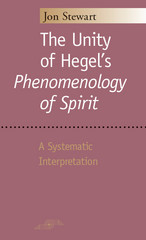 The Unity of Hegel's "Phenomenology of Spirit": A Systematic Interpretation
Jon Stewart
Northwestern University Press, 2011 Hegel's Phenomenology is considered by many to be the most difficult book in the philosophical canon. While some authors have published excellent essays on various chapters and aspects of the book, few authors have successfully tackled the whole.
In The Unity of Hegel's "Phenomenology of Spirit", Jon Stewart interprets Hegel's work as a dialectical transformation of Kantian transcendental philosophy, providing from this unified standpoint a case for Hegel's own conception of philosophy as a system. In restoring them to their larger systematic contexts, Stewart clarifies Hegel's individual analyses, as well as indicating the meaning and significance of the transitions and illustrating the parallelisms between the respective analyses. Many of Hegel's main themes-
universal-particular, mediacy-immediacy-are traced through the text, demonstrating Hegel's formal continuity.
By examining at the microlevel the particulars of the dialectical movement, and by analyzing at the macrolevel the role of the argument in question in the context of the work as a whole, Stewart provides a detailed analysis of the Phenomenology and a significant scholarly demonstration of Hegel's own conception of the Phenomenology as a part of a systematic philosophy.
 The Unity of Reason: Essays on Kant’s Philosophy
Dieter Henrich
Harvard University Press, 1994 Kant holds a key position in the history of modern philosophy as the last great figure to belong fully to both the Anglo-American analytic tradition and the Continental tradition. As the world's foremost scholar of Kant and German Idealism, Dieter Henrich combines an encyclopedic knowledge of Kant's texts with an equally profound understanding of the philosophers of preceding and succeeding centuries. In this collection comprising four of his most influential essays, Henrich proves himself unique in the conjunction of philosophical acumen, insight, and originality that he brings to Kant interpretation.
Henrich's distinctive contribution has been to break through the entrenched stereotypes of the ontological and neo-Kantian schools of Kant interpretation in order to place Kant's major ideas in their historical and developmental context, demonstrating their enduring philosophical significance. Henrich has shown how Kant's attempt to overcome the dichotomy between rationalism and moral-sense philosophy led to a lifelong struggle to establish the unity of theoretical and practical reason and the inseparability of the motivational force of the principle of ethics from its function as a principle for ethical judgment. But Henrich has also shown how Kant's project of unification contained fundamental tensions that called forth the projects of such post-Kantians as Schiller, Fichte, and Hegel, which explored new approaches within the Kantian framework.
The heart of Henrich's interpretation of Kant, the essays in this book present a persuasive picture of the development of Kant's moral philosophy and give an account of the argumentative strategies determining all the aspects of Kant's philosophy. They reflect Henrich's general interest in the unity of reason as well as his special interest in self-consciousness as both a key concept of modern philosophy and the key to the highly disputed interpretation of Kant's transcendental deduction of categories.
The Unity of the Nations
Joseph Ratzinger
Catholic University of America Press, 2015 What did ancient Christians and pagans believe makes the unity of the nations? Just as he began serving as a major adviser at the Second Vatican Council in 1962, Joseph Ratzinger (the future Pope Benedict XVI) studied this question in lectures delivered at Austria's University of Salzburg. These lectures, originally published in German, are now made available in English in this volume.
The Unity of Unbounded Dependency Constructions
Robert D. Levine and Thomas E. Hukari
CSLI, 2006 How do languages transmit information about the properties of phrases over large structural distances? This is the difficult question raised by the phenomenon of extraction, and while extraction has driven the development of syntactic theory for decades, there is still no consensus on what form the connectivity mechanism should take. A number of recent theoretical approaches share the view that extraction is not a unitary phenomenon, but this monograph offers data that radically undercuts this view. The grammar of extraction connectivity, the authors conclude, is relatively simple, homogenous in construction type, and uniform in the position of the extractee.
The Unity of William James's Thought
Wesley Cooper
Vanderbilt University Press, 2002 Wesley Cooper opposes the traditional view of William Jamesís philosophy which dismissed it as fragmented or merely popular, arguing instead that there is a systematic philosophy to be found in James's writings. His doctrine of pure experience is the binding thread that links his earlier psychological theorizing to his later epistemological, religious, and pragmatic concerns.
 Universal Abandon: The Politics of Postmodernism
Andrew Ross, Editor
University of Minnesota Press, 1989 Universal Abandon was first published in 1989. Minnesota Archive Editions uses digital technology to make long-unavailable books once again accessible, and are published unaltered from the original University of Minnesota Press editions. In recent years, the debate about postmodernism has become a full-blown, global discussion about the nature and future of society: it has challenged and redefined the cultural and sexual politics of the last two decades, and is increasingly shaping tomorrow's agenda. Postmodernist culture is a medium in which we all live, no matter how unevenly its effects are felt across the jagged spectrum of color, gender, class, sexual, orientation, region, and nationality. But it is also a culture that proclaims its abandonment of the universalist foundations of Enlightenment thought in the West. At a time when interests can no longer be universalized, the question arises: Whose interests are served by this "universal abandon"? Universal Abandon is the first volume in a new series entitled Cultural Politics, edited by the Social Text collective. This collection tackles a wider range of cultural and political issues than are usually addressed in the debates about postmodernism—color, ethnicity, and neocolonialism; feminism and sexual difference; popular culture and the question of everyday life—as well as some political and philosophical matters that have long been central to the Western tradition. Together, the contributors provide no consensus about the politics of postmodernism; they insist, rather, that "universal abandon?" remain a question and not an answer. The contributors: Anders Stephanson, Chantal Mouffe, Stanley Aronowitz, Ernesto Laclau, Nancy Fraser, Linda Nicholson, Meaghan Morris, Paul Smith, Laura Kipnis, Lawrence Grossberg, Abigail Solomon-Godeau, George Yudice, Jacqueline Rose, and Hal Foster. Andrew Ross teaches English at Princeton University and is the author of The Failure of Modernism.
The Universal Art of Samuel van Hoogstraten (1627-1678): Painter, Writer, and Courtier
Edited by Thijs Weststeijn
Amsterdam University Press, 2013 Samuel van Hoogstraten was not only one of Rembrandt’s most successful pupils but also a versatile painter in his own right. His experiments in optical illusion also attracted the interest of the natural scientists of his time, and he wrote some of the first Dutch novels, plays, and a treatise on painting. This rich interdisciplinary study examines how van Hoogstraten understood the relationship between art, literature, and science and how these reflected the general views of his time. Bringing to the fore hitherto unknown works, the book is an important contribution to our understanding of van Hoogstraten’s life and art.
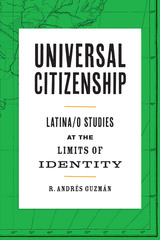 Universal Citizenship: Latina/o Studies at the Limits of Identity
By R. Andrés Guzmán
University of Texas Press, 2019 Recently, many critics have questioned the idea of universal citizenship by pointing to the racial, class, and gendered exclusions on which the notion of universality rests. Rather than jettison the idea of universal citizenship, however, R. Andrés Guzmán builds on these critiques to reaffirm it especially within the fields of Latina/o and ethnic studies. Beyond conceptualizing citizenship as an outcome of recognition and admittance by the nation-state—in a negotiation for the right to have rights—he asserts that, insofar as universal citizenship entails a forceful entrance into the political from the latter’s foundational exclusions, it emerges at the limits of legality and illegality via a process that exceeds identitarian capture. Drawing on Lacanian psychoanalysis and philosopher Alain Badiou’s notion of “generic politics,” Guzmán advances his argument through close analyses of various literary, cultural, and legal texts that foreground contention over the limits of political belonging. These include the French Revolution, responses to Arizona’s H.B. 2281, the 2006 immigrant rights protests in the United States, the writings of Oscar “Zeta” Acosta, Frantz Fanon’s account of Algeria’s anticolonial struggle, and more. In each case, Guzmán traces the advent of the “citizen” as a collective subject made up of anyone who seeks to radically transform the organizational coordinates of the place in which she or he lives.
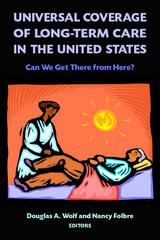 Universal Coverage of Long-Term Care in the United States: Can We Get There from Here?
Douglas A. Wolfe
Russell Sage Foundation, 2013 As millions of baby boomers retire and age in the coming years, more American families will confront difficult choices about the long-term care of their loved ones. The swelling ranks of the disabled and elderly who need such care—including home care, adult day care, or a nursing home stay—are faced with a strained, inequitable and expensive system. How will American society and policy adapt to this demographic transition? In Universal Coverage of Long-Term Care in the United States, editors Nancy Folbre and Douglas Wolf and an expert group of care researchers assess the current U.S. long-term care policies and exercise what can be learned from other countries facing similar care demands. After the high-profile suspension of the Obama Administration’s public long-term insurance program in 2011, Robert Hudson and Howard Gleckman provide concrete suggestions for lowering the cost and improving the quality of long-term care coverage in America. In a deeply personal and empirically rigorous analysis, family care expert Carol Levine draws crucial lessons from her experience as a caregiver for her ailing husband. She sheds light on the often fraught interactions that occur between the formal care system and family caregivers and analyzes how public policy can best support long-term family care. The volume next examines recent reforms in other developed countries and finds valuable lessons for American policy-makers. Contributors David Bell and Alison Bowes discuss the provision of personal care services in Scotland, which have been publicly financed since 2002. Their analysis shows that the new program reduced costs improved efficiency and allowed more recipients to receive care. The volume assesses the political and institutional prospects for moving towards a truly universal long-term care system in the United States. Robyn Stone provides a sobering overview of the formal, paid long-term care workforce in America, which is in crisis due to increasing demand and a shortage of qualified workers. Economist Leonard Burman focuses on public finances of the long-term care system, which will come under increasing strain as more Americans rely on Medicaid to pay for their long-term care. In the volume’s concluding chapter, Folbre and Wolf summarize criticisms of existing long-term care policies and outline particular reforms that can move the United States toward a universal system of long-term care insurance. Universal Coverage of Long-Term Care in the United States provides an essential resource on how to improve the long-term care sector in America and helps advance the national debate on this pressing topic. This volume is available for free download on the Foundation’s website, as are the volume’s individual chapters.
The Universal Declaration of Human Rights and the Challenge of Religion
Johannes Morsink
University of Missouri Press, 2017 Repulsed by evil Nazi practices and desiring to create a better world after the devastation of World War II, in 1948 the UN General Assembly adopted the Universal Declaration of Human Rights (UDHR). Because of the secular imprint of this text, it has faced a series of challenges from the world’s religions, both when it was crafted and in subsequent political and legal struggles. The book mixes philosophical, legal, and archival arguments to make the point that the language of human rights is a valid one to address the world’s disputes. It updates the rationale used by the early UN visionaries and makes it available to twenty-first-century believers and unbelievers alike. The book shows how the debates that informed the adoption of this pivotal normative international text can be used by scholars to make broad and important policy points.
 The Universal Declaration of Human Rights and the Holocaust: An Endangered Connection
Johannes Morsink
Georgetown University Press, 2019 Johannes Morsink argues that the 1948 UN Universal Declaration of Human Rights and the human rights movement today are direct descendants of revulsion to the Holocaust and the desire to never let it happen again. Much recent scholarship about human rights has severed this link between the Holocaust, the Universal Declaration, and contemporary human rights activism in favor of seeing the 1970s as the era of genesis. Morsink forcefully presents his case that the Universal Declaration was indeed a meaningful though underappreciated document for the human rights movement and that the declaration and its significance cannot be divorced from the Holocaust. He reexamines this linkage through the working papers of the commission that drafted the declaration as well as other primary sources. This work seeks to reset scholarly understandings of the Universal Declaration of Human Rights and the foundations of the contemporary human rights movement.
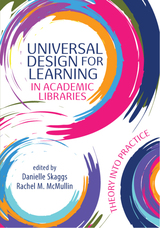 Universal Design for Learning in Academic Libraries: Theory into Practice
Danielle Skaggs
Association of College & Research Libraries, 2024 Universal Design for Learning (UDL) is an educational framework for improving and optimizing teaching and learning. It’s focused on intentionally designing for the needs and abilities of all learners—putting accessibility into the planning stages instead of as an accommodation after the fact—and providing flexibility in the ways students access and engage with materials and learning objectives. In four parts, Universal Design for Learning in Academic Libraries: Theory into Practice explores UDL: - Theory and Background
- In Instruction and Reference
- Behind the Scenes
- Beyond the Library
Chapters include looks at UDL and U.S. law and policy; working with student disability services to create accessible research services; UDL and the ACRL Framework for Information Literacy in Higher Education and the Reference and User Services Association’s “Guidelines for Behavioral Performance of Reference and Information Service Providers”; making open educational resources equitable and accessible; and much more. There are lesson plans and strategies for the wide range of instructional activities that occur in academic libraries, including in-person, online, synchronous, asynchronous, and research help, as well as different types of academic library work such as access services and leadership. Universal Design for Learning in Academic Libraries can make learning about UDL and implementing it into your work quicker and easier, and provides ways to become an advocate for UDL inside your library and across campus.
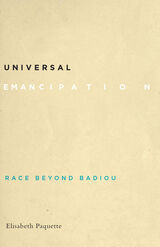 Universal Emancipation: Race beyond Badiou
Elisabeth Paquette
University of Minnesota Press, 2020 A vital and timely contribution to the growing scholarship on the political thought of Alain Badiou
Is inattention to questions of race more than just incidental to Alain Badiou’s philosophical system? Universal Emancipation reveals a crucial weakness in the approach to (in)difference in political life of this increasingly influential French thinker. With white nationalist movements on the rise, the tensions between commitments to universal principles and attention to difference and identity are even more pressing.
Elisabeth Paquette’s powerful critical analysis demonstrates that Badiou’s theory of emancipation fails to account for racial and racialized subjects, thus attenuating its utility in thinking about freedom and justice. The crux of the argument relies on a distinction he makes between culture and politics, whereby freedom only pertains to the political and not the cultural. The implications of this distinction become evident when she turns to two examples within Badiou’s theory: the Négritude movement and the Haitian Revolution. According to Badiou’s 2017 book Black, while Négritude is an important cultural movement, it cannot be considered a political movement because Négritude writers and artists were too focused on particularities such as racial identity. Paquette argues that Badiou’s discussion of Négritude mirrors that of Jean-Paul Sartre in his 1948 essay “Black Orpheus” that has been critiqued by leading critical race theorists. Second, prominent Badiou scholar Nick Nesbitt claims that the Haitian Revolution could only be considered political if its adherents had shifted their focus away from race. However, Paquette argues that not only was race a central feature of this revolution but also that the revolution ought to be understood as a political emancipation movement.
Paquette also moves beyond Badiou, drawing on the groundbreaking work of Sylvia Wynter to offer an alternative framework for emancipation. She juxtaposes Badiou’s use of universality as indifference to difference with Wynter’s pluri-conceptual theory of emancipation, emphasizing solidarity over indifference. Paquette then develops her view of a pluri-conceptual theory of emancipation, wherein particular identities, such as race, need not be subtracted from a theory of emancipation.
 Universal Grammar and Narrative Form
David Herman
Duke University Press, 1995 In a major rethinking of the functions, methods, and aims of narrative poetics, David Herman exposes important links between modernist and postmodernist literary experimentation and contemporary language theory. Ultimately a search for new tools for narrative theory, his work clarifies complex connections between science and art, theory and culture, and philosophical analysis and narrative discourse.
Following an extensive historical overview of theories about universal grammar, Herman examines Joyce’s Ulysses, Kafka’s The Trial, and Woolf’s Between the Acts as case studies of modernist literary narratives that encode grammatical principles which were (re)fashioned in logic, linguistics, and philosophy during the same period. Herman then uses the interpretation of universal grammar developed via these modernist texts to explore later twentieth-century cultural phenomena. The problem of citation in the discourses of postmodernism, for example, is discussed with reference to syntactic theory. An analysis of Peter Greenaway’s The Cook, The Thief, His Wife, and Her Lover raises the question of cinematic meaning and draws on semantic theory. In each case, Herman shows how postmodern narratives encode ideas at work in current theories about the nature and function of language.
Outlining new directions for the study of language in literature, Universal Grammar and Narrative Form provides a wealth of information about key literary, linguistic, and philosophical trends in the twentieth century.
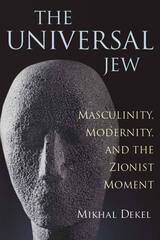 The Universal Jew: Masculinity, Modernity, and the Zionist Moment
Mikhal Dekel
Northwestern University Press, 2010 The Universal Jew analyzes literary images of the Jewish nation and the Jewish national subject at Zionism’s formative moment. In a series of original readings of late nineteenth-century texts—from George Eliot’s Daniel Deronda to Theodor Herzl’s Altneuland to the bildungsromane of Russian Hebrew and Yiddish writers—Mikhal Dekel demonstrates the aesthetic and political function of literary works in the making of early Zionist consciousness. More than half a century before the foundation of the State of Israel and prior to the establishment of the Zionist political movement, Zionism emerges as an imaginary concept in literary texts that create, facilitate, and naturalize the transition from Jewish-minority to Jewish-majority culture. The transition occurs, Dekel argues, mainly through the invention of male literary characters and narrators who come to represent "exemplary" persons or "man in general" for the emergent, still unformed national community.
Such prototypical characters transform the symbol of the Jew from a racially or religiously defined minority subject to a "post-Jewish," particularuniversal, and fundamentally liberal majority subject. The Universal Jew situates the "Zionist moment" horizontally, within the various intellectual currents that make up the turn of the twentieth century: the discourse on modernity, the crisis in liberalism, Nietzsche’s critique of the Enlightenment, psychoanalysis, early feminism, and fin de siècle interrogation of sexual identities. The book examines the symbolic roles that Jews are assigned within these discourses and traces the ways in which Jewish literary citizens are shaped, both out of and in response to them. Beginning with an analysis of George Eliot’s construction of the character Deronda and its reception in Zionist circles, the Universal Jew ends with the self-fashioning of male citizens in fin de siècle and post-statehood Hebrew works, through the aesthetics oftragedy. Throughout her readings, Dekel analyzes the political meaning of these nascent images of citizens, uncovering in particular the gendered arrangements out of which they are born.
The Universal Journalist
David Randall
Pluto Press, 2021 This is the only 'how to' book on journalism written by writers and editors who have operated at the top level in national news. It has long been the go-to book of advice for young reporters This edition includes a chapter on social media and is extensively updated throughout, with new content from Jemma Crew, an award-winning national news journalist. The book emphasises that good journalism must involve the acquisition of a range of skills that will empower trainees to operate in an industry where ownership, technology and information are constantly changing. This handbook includes tips and tricks learned from working at the very top of the business, and is an invaluable guide to the 'universals' of good journalistic practice for professional and trainee journalists worldwide.
Universal Logic
Ross Brady
CSLI, 2001 Throughout the twentieth century, the classical logic of Frege and Russell dominated the field of formal logic. But, as Ross Brady argues, a new type of weak relevant logic may prove to be better equipped to present new solutions to persistent paradoxes. Universal Logic begins with an overview of classical and relevant logic and discusses the limitations of both in analyzing certain paradoxes. It is the first text to demonstrate how the main set-theoretic and semantic paradoxes can be solved in a systematic way and as such will be of great interest to both scholars and students of logic.
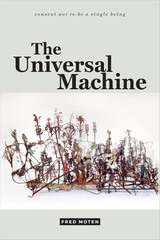 The Universal Machine
Fred Moten
Duke University Press, 2018 "Taken as a trilogy, consent not to be a single being is a monumental accomplishment: a brilliant theoretical intervention that might be best described as a powerful case for blackness as a category of analysis."—Brent Hayes Edwards, author of Epistrophies: Jazz and the Literary Imagination
In The Universal Machine—the concluding volume to his landmark trilogy consent not to be a single being—Fred Moten presents a suite of three essays on Emmanuel Levinas, Hannah Arendt, and Frantz Fanon, in which he explores questions of freedom, capture, and selfhood. In trademark style, Moten considers these thinkers alongside artists and musicians such as William Kentridge and Curtis Mayfield while interrogating the relation between blackness and phenomenology. Whether using Levinas's idea of escape in unintended ways, examining Arendt's antiblackness through Mayfield's virtuosic falsetto and Anthony Braxton's musical language, or showing how Fanon's form of phenomenology enables black social life, Moten formulates blackness as a way of being in the world that evades regulation. Throughout The Universal Machine—and the trilogy as a whole—Moten's theorizations of blackness will have a lasting and profound impact.
 Universal Prostitution and Modernist Abstraction: A Counterhistory
Jaleh Mansoor
Duke University Press, 2025 In Universal Prostitution and Modernist Abstraction, Jaleh Mansoor provides a counternarrative of modernism and abstraction and a reexamination of Marxist aesthetics. Mansoor draws on Marx’s concept of prostitution—a conceptual device through which Marx allegorized modern labor—to think about the confluences of generalized and gendered labor in modern art. Analyzing works ranging from Édouard Manet’s Olympia and Georges Seurat’s The Models to contemporary work by Hito Steyerl and Hannah Black, she shows how avant-garde artists can detect changing modes of production and capitalist and biopolitical processes of abstraction that assign identities to subjects in the interest of value’s impersonal circulation. She demonstrates that art and abstraction resist modes of production and subjugation at the level of process and form rather than through referential representation. By studying gendered and generalized labor, abstraction, automation, and the worker, Mansoor shifts focus away from ideology, superstructure, and culture toward the ways art indexes crisis and transformation in the political economic base. Ultimately, she traces the outlines of a counterpraxis to capital while demonstrating how artworks give us a way to see through the abstractions of everyday life.
 The Universal Sport: Two Years inside Boxing
Thomas Hauser
University of Arkansas Press, 2023 Readers, writers, and critics alike look forward to each new collection of Thomas Hauser's articles about today’s boxing scene. Reviewing these books, Booklist has proclaimed, “Many journalists have written fine boxing pieces, but none has written as extensively or as memorably as Thomas Hauser. . . . Hauser remains the current champion of boxing. . . . He is a treasure.”
Hauser’s newest collection meets this high standard. The Universal Sport features Hauser’s coverage of 2021 and 2022 in boxing. As always, Hauser chronicles the big fights and gives readers a behind-the-scenes look at boxing’s biggest stars. He offers a cogent look the rise of women’s boxing and shines a penetrating light on the murky world of illegal performance enhancing drugs and financial corruption at the sport’s highest levels. He explores how boxing has become a tool in the high-stakes world of “sportswashing” by Saudi Arabia and a flash point for discussions about Russia’s brutal invasion of Ukraine. The book culminates in a memorable four-part essay on the craft of writing coupled with reflections on Hauser’s own induction into the International Boxing Hall of Fame.
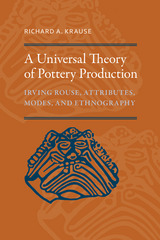 A Universal Theory of Pottery Production: Irving Rouse, Attributes, Modes, and Ethnography
Richard A. Krause
University of Alabama Press, 2016 In A Universal Theory of Pottery Production, award-winning archaeologist Richard A. Krause presents an ethnographic account of pottery production based on archaeological evidence.
Krause posits that the careful study of an archaeological site’s ceramics can be used to formulate a step-and-stage theory of pottery production for the area. Krause’s work suggests that by comparing the results of inquiries conducted at different sites and for different times, archaeologists may be able to create a general ethnographic theory of pottery production.
Krause demonstrates this process through a comprehensive analysis of potsherds from the highly stratified Puerto Rican site of Paso del Indio. He first provides a comprehensive explanation of the archaeological concepts of attribute, mode, feature, association, site, analysis, and classification. Using these seven concepts, he categorizes the production and decorative techniques in the Paso del Indio site. Krause then applies the concept of “focal form vessels” to the site’s largest fragments to test his step-and-stage theory of production against the evidence they provide. Finally, he assigns the ceramics at Paso del Indio to previously discussed potting traditions.
Unlike other books on the subject that use statistical methods to frame basic archaeological concepts, Krause approaches these topics from the perspective of epistemology and the explicatory practices of empirical science. In A Universal Theory of Pottery Production Krause offers much of interest to North American, Caribbean, and South American archaeologists interested in the manufacture, decoration, and classification of prehistoric pottery, as well as for archaeologists interested in archaeological theory.
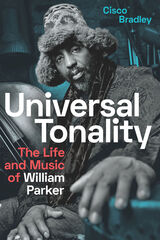 Universal Tonality: The Life and Music of William Parker
Cisco Bradley
Duke University Press, 2021 Since ascending onto the world stage in the 1990s as one of the premier bassists and composers of his generation, William Parker has perpetually toured around the world and released over forty albums as a leader. He is one of the most influential jazz artists alive today. In Universal Tonality historian and critic Cisco Bradley tells the story of Parker’s life and music. Drawing on interviews with Parker and his collaborators, Bradley traces Parker’s ancestral roots in West Africa via the Carolinas to his childhood in the South Bronx, and illustrates his rise from the 1970s jazz lofts and extended work with pianist Cecil Taylor to the present day. He outlines how Parker’s early influences—Ornette Coleman, John Coltrane, Albert Ayler, and writers of the Black Arts Movement—grounded Parker’s aesthetic and musical practice in a commitment to community and the struggle for justice and freedom. Throughout, Bradley foregrounds Parker’s understanding of music, the role of the artist, and the relationship between art, politics, and social transformation. Intimate and capacious, Universal Tonality is the definitive work on Parker’s life and music.
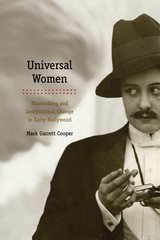 Universal Women: Filmmaking and Institutional Change in Early Hollywood
Mark Garrett Cooper
University of Illinois Press, 2010 A Choice Outstanding Academic Title, 2011. Between 1912 and 1919, the Universal Film Manufacturing Company credited eleven women with directing at least 170 films, but by the mid-1920s all of these directors had left Universal and only one still worked in the film industry at all. Two generations of cinema historians have either overlooked or been stymied by the mystery of why Universal first systematically supported and promoted women directors and then abruptly reversed that policy. In this trailblazing study, Mark Garrett Cooper approaches the phenomenon as a case study in how corporate movie studios interpret and act on institutional culture in deciding what it means to work as a man or woman. In focusing on issues of institutional change, Cooper challenges interpretations that explain women's exile from the film industry as the inevitable result of a transhistorical sexism or as an effect of a broadly cultural revision of gendered work roles. Drawing on a range of historical and sociological approaches to studying corporate institutions, Cooper examines the relationship between institutional organization and aesthetic conventions during the formative years when women filmmakers such as Ruth Ann Baldwin, Cleo Madison, Ruth Stonehouse, Elise Jane Wilson, and Ida May Park directed films for Universal.
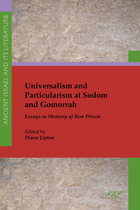 Universalism and Particularism at Sodom and Gomorrah: Essays in Memory of Ron Pirson
Diana Lipton
SBL Press, 2012 This book reexamines the Sodom and Gomorrah narrative in Genesis 18–19, an ethically charged text that has significantly influenced views about homosexuality, stereotyping the other, the rewards and risks of hospitality, and the justice owed to outsiders. Its twelve essays, reflecting their authors’ considerable geographical, religious, methodological, and academic diversity, explore this troubling text through the lens of universalism and particularism. Biblical Sodom is read as the site of multiple borders—fluid, porous, and bi-directional—between similar and different, men and angels, men and women, fathers and daughters, insiders and outsiders, hosts and guests, residents and aliens, chosen and nonchosen, and people and God. Readers of these exegetically and theologically attentive essays published in memory of Ron Pirson will experience a rare sense of an ancient text being read in and for the modern world. The contributors are Calum Carmichael, Diana Lipton, William John Lyons, Nathan MacDonald, Amira Meir, Yitzhak (Itzik) Peleg, T. A. Perry, Ron Pirson, Jonathan D. Safren, Megan Warner, Harlan J. Wechsler, and Ellen J. van Wolde.
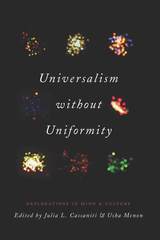 Universalism without Uniformity: Explorations in Mind and Culture
Edited by Julia L. Cassaniti and Usha Menon
University of Chicago Press, 2017 One of the major questions of cultural psychology is how to take diversity seriously while acknowledging our shared humanity. This collection, edited by Julia L. Cassaniti and Usha Menon, brings together leading scholars in the field to reconsider that question and explore the complex mechanisms that connect culture and the human mind.
The contributors to Universalism without Uniformity offer tools for bridging silos that have historically separated anthropology’s attention to culture and psychology’s interest in universal mental processes. Throughout, they seek to answer intricate yet fundamental questions about why we are motivated to find meaning in everything around us and, in turn, how we constitute the cultural worlds we inhabit through our intentional involvement in them. Laying bare entrenched disciplinary blind spots, this book offers a trove of insights on issues such as morality, emotional functioning, and conceptions of the self across cultures. Filled with impeccable empirical research coupled with broadly applicable theoretical reflections on taking psychological diversity seriously, Universalism without Uniformity breaks new ground in the study of mind and culture.
 Universals: Studies in Indian Logic and Linguistics
Frits Staal
University of Chicago Press, 1988 This collection of articles and review essays, including many hard to find pieces, comprises the most important and fundamental studies of Indian logic and linguistics ever undertaken.
Frits Staal is concerned with four basic questions: Are there universals of logic that transcend culture and time? Are there universals of language and linguistics? What is the nature of Indian logic? And what is the nature of Indian linguistics? By addressing these questions, Staal demonstrates that, contrary to the general assumption among Western philosophers, the classical philosophers of India were rationalists, attentive to arguments. They were in this respect unlike contemporary Western thinkers inspired by existentialism or hermeneutics, and like the ancient Chinese, Greeks, and many medieval European schoolmen, only—as Staal says—more so. Universals establishes that Asia's contributions are not only compatible with what has been produced in the West, but a necessary ingredient and an essential component of any future human science.
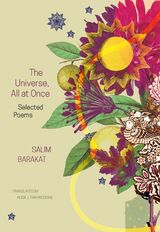 The Universe, All at Once: Selected Poems
Salim Barakat
Seagull Books, 2024 A collection showcasing the latest poems of the Kurdish-Syrian maestro of Arabic style.
Salim Barakat, the captivating Kurdish-Syrian poet and novelist known for his mastery of Arabic style, is hailed as an enigmatic and intricate figure in contemporary Arabic literature. In The Universe, All at Once, he curates, in collaboration with translator Huda J. Fakhreddine, a selection from his later works, considering them the pinnacle of his poetic career. Drawn from pieces composed between 2021 and 2023, the poems in this collection vary from excerpts of an expansive book-length poem to concise, intense fragments. Fakhreddine expertly renders his writing in English, a courageous and praiseworthy attempt to challenge the barriers of the untranslatable.
This volume not only showcases the prolific author’s poetic evolution but also features a comprehensive interview with Barakat. Conducted by Fakhreddine, the interview delves into Barakat’s early influences, hobbies, talents, reader expectations, and reflections on displacement, childhood, and interpersonal connections. Together, The Universe, All at Once presents the best of Barakat’s latest poetry to his readers and allows invaluable insight into the writing processes and motivations of a visionary modern poet.
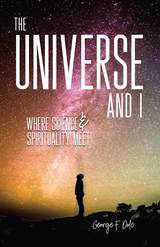 The Universe and I: Where Science & Spirituality Meet
George F. Dole
Swedenborg Foundation Publishers, 2018 The Universe and I: Where Science & Spirituality Meet offers scholar and theologian George F. Dole’s thought-provoking insights on the dynamic nature of the ongoing science and religion debate. Why are we here? Where are we headed? Dole argues that to understand these questions, we need not only the grounding of science but also the insights of spirit.
As experts continue to work out the relationship between cosmology and human evolution, Dole, who has spent a lifetime making sense of the spiritual world, joins the conversation with a clarity that only he can provide. Shaped primarily as a response to the scientific community, he engages with a wide spectrum of thinkers, including Stephen Hawking, Richard Dawkins, and eighteenth-century polymath Emanuel Swedenborg, just to name a few.
Accessing a wealth of knowledge from across a wide variety of disciplines—philosophy, religion, biology, physics, and more—Dole presents his own model for our physical and spiritual existence. Starting with what we don’t know and what we can observe about the fundamentals of existence, Dole explores “the creative tension between differentiation and integration”—the drive to be individual and yet be united to a greater whole, a tension whose persistent progress since the Big Bang has brought about such gifts as the emergence of life and consciousness.
Dole not only presents us with the empirical evidence of science but also provides us with a first-person understanding of the spiritual dimension and how it might inform the way we consider those grand speculations on the meaning of the universe and of life. Reflecting on how life began leads to questions of how we will continue to advance humanity and goodwill for all—both as a species and as individuals striving for personal growth.
Asking the question “How can I, infinitesimal I, have the gall to regard myself as significant in the context of the universe?”, Dole embarks on a journey that spans the life of the universe itself, making every effort along the way to answer this question—for all of us.
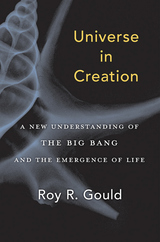 Universe in Creation: A New Understanding of the Big Bang and the Emergence of Life
Roy R. Gould
Harvard University Press, 2018 We know the universe has a history, but does it also have a story of self-creation to tell? Yes, in Roy R. Gould’s account. He offers a compelling narrative of how the universe—with no instruction other than its own laws—evolved into billions of galaxies and gave rise to life, including humans who have been trying for millennia to comprehend it. Far from being a random accident, the universe is hard at work, extracting order from chaos.
Making use of the best current science, Gould turns what many assume to be true about the universe on its head. The cosmos expands inward, not outward. Gravity can drive things apart, not merely together. And the universe seems to defy entropy as it becomes more ordered, rather than the other way around. Strangest of all, the universe is exquisitely hospitable to life, despite its being constructed from undistinguished atoms and a few unexceptional rules of behavior. Universe in Creation explores whether the emergence of life, rather than being a mere cosmic afterthought, may be written into the most basic laws of nature.
Offering a fresh take on what brought the world—and us—into being, Gould helps us see the universe as the master of its own creation, not tethered to a singular event but burgeoning as new space and energy continuously stream into existence. It is a very old story, as yet unfinished, with plotlines that twist and churn through infinite space and time.
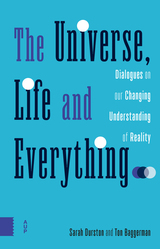 The Universe, Life and Everything: Dialogues on our Changing Understanding of Reality
Sarah Durston and Ton Baggerman
Amsterdam University Press, 2017 Our current understanding of our world is nearly 350 years old. It stems from the ideas of Descartes and Newton and has brought us many great things, including modern science and increases in wealth, health and everyday living standards. Furthermore, it is so ingrained in our daily lives that we have forgotten it is a paradigm, not a fact. There are, however, some problems with it. First, there is no satisfactory explanation for why we have consciousness and experience meaning in our lives. Second, modern-day physics tells us that observations depend on characteristics of the observer at the large, cosmic, and small, subatomic scales. Third, ongoing humanitarian and environmental crises show us that our world is vastly interconnected. Our understanding of reality is expanding to incorporate these issues. In The Universe, Life and Everything . . . Dialogues on our Changing Understanding of Reality, some of the scholars at the forefront of this change, from the fields of physics, psychology, and social sciences, discuss the direction it is taking and its urgency.
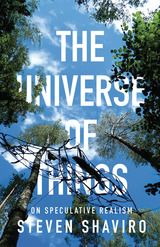 The Universe of Things: On Speculative Realism
Steven Shaviro
University of Minnesota Press, 2014 From the rediscovery of Alfred North Whitehead’s work to the rise of new materialist thought, including object-oriented ontology, there has been a rapid turn toward speculation in philosophy as a way of moving beyond solely human perceptions of nature and existence. Now Steven Shaviro maps this quickly emerging speculative realism, which is already dramatically influencing how we interpret reality and our place in a universe in which humans are not the measure of all things. The Universe of Things explores the common insistence of speculative realism on a noncorrelationist thought: that things or objects exist apart from how our own human minds relate to and comprehend them. Shaviro focuses on how Whitehead both anticipates and offers challenges to prevailing speculative realist thought, moving between Whitehead’s own panpsychism, Harman’s object-oriented ontology, and the reductionist eliminativism of Quentin Meillassoux and Ray Brassier. The stakes of this recent speculative realist thought—of the effort to develop new ways of grasping the world—are enormous as it becomes clear that our inherited assumptions are no longer adequate to describe, much less understand, the reality we experience around us. As Shaviro acknowledges, speculative realist thought has its dangers, but it also, like the best speculative fiction, holds the potential to liberate us from confining views of what is outside ourselves and, he believes, to reclaim aesthetics and beauty as a principle of life itself. Bringing together a wide array of contemporary thought, and evenhandedly assessing its current debates, The Universe of Things is an invaluable guide to the evolution of speculative realism and the provocation of Alfred North Whitehead’s pathbreaking work.
The Universe We Think In
James V. Schall
Catholic University of America Press, 2018 The Universe We Think In arises from a tradition of realism, both philosophical and political, a universe in which the common sense understanding of things is included in our judgement about them. The scope is both vast and narrow – vast because it
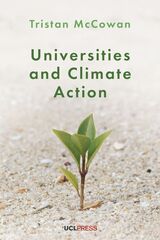 Universities and Climate Action
Tristan McCowan
University College London, 2025 The climate crisis demands more than innovation; it requires a radical rethinking of the role of universities.
As the climate crisis intensifies, universities stand at a crossroads—both as contributors to ecological challenges and as agents of change. Universities and Climate Action presents a novel framework for understanding how higher education institutions can engage meaningfully with climate issues across teaching, research, governance, and community outreach. Tristan McCowan investigates the tensions between academia’s historical complicity in environmental exploitation and its immense potential in driving sustainable transformation.
This work offers a holistic perspective on how universities influence climate change at local and global levels, underscoring both the barriers to action and the pathways to meaningful change. With examples from institutions worldwide, McCowan demonstrates how universities can embed climate responsibility into curricula, shift research priorities, and foster climate-conscious campus operations. By synthesizing diverse approaches and offering practical principles for reform, Universities and Climate Action is a vital blueprint for academics and university leaders seeking to reorient higher education toward a just and sustainable future.
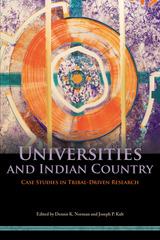 Universities and Indian Country: Case Studies in Tribal-Driven Research
Edited by Dennis K. Norman and Joseph P. Kalt
University of Arizona Press, 2015 The book describes the “nation-building” strategy by which an increasing number of Native communities have set about reclaiming powers of self-determination, strengthening their cultures, and developing their economies. A piece of this movement has been the establishment of new models for tribally-driven and requested relations between universities and American Indian/Alaskan Native communities and organizations.
Building on the Harvard Project on American Indian Economic Development’s experience with more than 120 nation-building projects over two decades, Universities and Indian Country posits that the tenets of nation building can provide a strategy for expanding and diversifying universities’ perspectives of knowledge in a multicultural world, while also producing results that are requested by and useful to Native communities.
This groundbreaking volume extends the dialogue begun by the Harvard project, providing another venue for the sharing of knowledge and information. The projects presented address a wide range of topics, including the regulation of genetic research, human resource development, tribal fund-raising, development of tribal museums, and freedom of the press in Indian Country.
Universities and Indian Country’s focus on the concerns and questions of Native communities themselves, provides insight not only into how projects came together, but also into what significance they have to the tribal partners. This compilation is a valuable resource for any student, professional, or community member concerned with issues of nation building and self-determination.
 Universities and Reflexive Modernity: Institutional Ambiguities and Unintended Consequences
Lazar Vlasceanu
Central European University Press, 2010 A book about the challenges and uncertainties facing today's university, a chronicle of recent and current changes in higher education in the world. There are many questions today that are sufficiently open to doubt and profoundly related to new developments, to justify our starting new enquiries, here and now, by looking freshly and more closely at the actual configurations and at their historical grounds, for providing the new standard account of the university today. Vlasceanu discusses the inherent contradiction between academia on the one hand, and expectations and regulations of the market on the other. Analyses demographic and other statistical characteristics of today's higher education. Examines the financial basis of universities in various countries, and describes current governance models. Finally the author sets up a new typology of universities.
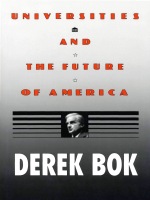 Universities and the Future of America
Derek Bok
Duke University Press, 1990 Since World War II, says the author, industrialized nations have come to depend so heavily on expert knowledge, scientific discovery, and highly trained personnel that universities have become “the central institution in postindustrial society.”
“If universities are so important to society and if ours are so superior, one might have thought that America would be flourishing in comparison to other industrialized countries of the world. Yet this is plainly not the case. . . . Our economic position in the world has deteriorated [and] we have climbed to the top, or near the top, of all advanced countries in the percentage of population who live in poverty, commit crimes, become addicted to drugs, have illegitimate children, or are classified as functionally illiterate.” In light of these results, “it is fair to ask whether our universities are doing all they can and should to help America surmount the obstacles that sap our economic strength and blight the lives of millions of our people.”
Having posed this question, Derek Bok reviews what science can do to bring about greater productivity, what professional schools can do to improve the effectiveness of corporations, government, and public education, and what all parts of the university are doing to help students acquire higher levels of ethical and social responsibility. He concludes that Universities are contributing much less than the should to help the nation address its most urgent social problems. “A century after the death of Cardinal Newman, many university officials and faculty members continue to feel ambivalent about deliberate efforts to address practical problems of society. And though competition drives university leaders and their faculties to unremitting effort, what competition rewards is chiefly success in fields that command academic prestige rather than success in responding to important social needs.”
Bok urges academic leaders, trustees, foundations, and government agencies to work together to help universities realign their priorities “so that they will be ready to make their full contribution when the nation turns its attention again to the broad agenda of reform. . . . Observing our difficulties competing abroad, our millions of people in poverty, our drug-ridden communities, our disintegrating families, our ineffective schools, those who help to shape our universities have reason to ask whether they too have any time to lose.”
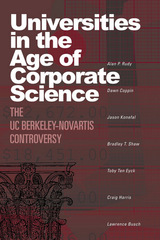 Universities in the Age of Corporate Science: The UC Berkeley-Novartis Controversy
Alan P. Rudy, Dawn Coppin, Jason Konefal, Bradley T. Shaw, Toby Ten Eyck, Craig Harris and Lawrence Busch
Temple University Press, 2007 As a result of widespread financial pressures, U.S. research universities increasingly stress the pursuit of funding beyond that available from government grants and contracts. Concomitantly, recent legal changes have encouraged universities to develop closer ties to the private business sector.This book represents the most thorough review ever undertaken of a major collaboration between industry and academe. A professional evaluation team obtained authorization for unprecedented access to those associated with the landmark $25 million contract entered into by the Plant and Microbial Biology Department at the University of California, Berkeley, and the Novartis Agricultural Discovery Institute, a subsidiary of Novartis, an international pharmaceutical and agribusiness conglomerate.This model study presents the inside story of the partnership itself, places it in the context of contemporary university-industry relationships, and provides a larger theoretical framework for evaluating such collaborations in the future.
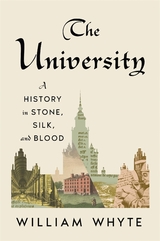 The University: A History in Stone, Silk, and Blood
William Whyte
Harvard University Press A sweeping history of the buildings and materials that have shaped nine centuries of university life, from parchments and silk robes to glass atriums and sprawling parking lots.
We often idealize the university as a sanctuary for disinterested reason, where material concerns are set aside in favor of higher principles. Yet when we remember our own college experiences, what springs to mind are not just lofty concepts but also material realities: cramped dorm rooms and musty library stacks, gothic towers and freshly mowed quads.
The University puts such seemingly inconsequential details at the center of the institution’s 900-year history. Constructing each chapter around an emblematic material—straw, stone, flesh, blood, silk, paper, iron, and concrete—William Whyte traces the intimate connections between the university’s shifting physical form and its evolving social and cultural meanings. From the medieval University of Paris, where students purchased bundles of straw to use as chairs in otherwise-unfurnished classrooms, to the ocean of concrete at postcolonial Nigeria’s Obafemi Awolowo University, Whyte shows how competing visions of higher learning left their imprint on generations of university architecture, landscaping, and furniture. Along the way, he highlights perennial fears that, within the social space of the university, the life of the mind would recede before worldly interests: that student bloodlines would be tainted by racial intermixing, that courting donors with buildings named in their honor would become more important than research and education, that the allure of powdered wigs and silk gowns would undermine scholarly discipline.
A richly textured chronicle, The University concludes that, even in the age of remote learning, the college campus is irreplaceable. The future of higher education includes fiber-optic cables, but stone, brick, and steel are here to stay.
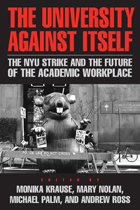 The University Against Itself: The NYU Strike and the Future of the Academic Workplace
edited by Monika Krause, Mary Nolan, Michael Palm and Andrew Ross
Temple University Press, 2008 During the last two decades, many U.S. universities have restructured themselves to operate more like corporations. Nowhere has this process been more dramatic than at New York University, which has often been touted as an exemplar of the "corporate university." Over the same period, an academic labor movement has arisen in response to this corporatization. Using the unprecedented 2005 strike by the graduate student union at NYU as a springboard, The University Against Itself provides a brief history of labor organizing on American campuses, analyzes the state of academic labor today, and speculates about how the university workplace may evolve for employees.
All of the contributors were either participants in the NYU strike -- graduate students, faculty, and organizers -- or are nationally recognized as writers on academic labor. They are deeply troubled by the ramifications of corporatizing universities. Here they spell out their concerns, offering lessons from one historic strike as well as cautions about the future of all universities.
Contributors include: Stanley Aronowitz, Barbara Bowen, Andrew Cornell, Ashley Dawson, Stephen Duncombe, Steve Fletcher, Greg Grandin, Adam Green, Kitty Krupat, Gordon Lafer, Micki McGee, Sarah Nash, Cary Nelson, Matthew Osypowski, Ed Ott, Ellen Schrecker, Susan Valentine, and the editors.
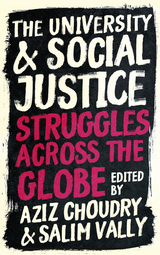 The University and Social Justice: Struggles Across the Globe
Aziz Choudry
Pluto Press, 2020 Higher education has long been contested terrain. From student movements to staff unions, the fight for accessible, critical and quality public education has turned university campuses globally into sites of struggle.
Whether calling for the decommodification or the decolonization of education, many of these struggles have attempted to draw on (and in turn, resonate with) longer histories of popular resistance, broader social movements and radical visions of a fairer world. In this critical collection, Aziz Choudry, Salim Vally and a host of international contributors bring grounded, analytical accounts of diverse struggles relating to higher education into conversation with each other.
Featuring contributions written by students and staff members on the frontline of struggles from 12 different countries, including Canada, Chile, France, India, Mexico, Nigeria, Occupied Palestine, the Philippines, South Africa, Turkey, the UK and the USA, the book asks what can be learned from these movements' strategies, demands and visions.
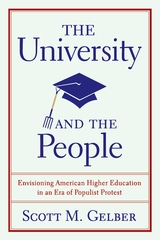 The University and the People: Envisioning American Higher Education in an Era of Populist Protest
Scott M. Gelber
University of Wisconsin Press, 2011 The University and the People chronicles the influence of Populism—a powerful agrarian movement—on public higher education in the late nineteenth century. Revisiting this pivotal era in the history of the American state university, Scott Gelber demonstrates that Populists expressed a surprising degree of enthusiasm for institutions of higher learning. More fundamentally, he argues that the mission of the state university, as we understand it today, evolved from a fractious but productive relationship between public demands and academic authority.
Populists attacked a variety of elites—professionals, executives, scholars—and seemed to confirm academia’s fear of anti-intellectual public oversight. The movement’s vision of the state university highlighted deep tensions in American attitudes toward meritocracy and expertise. Yet Populists also promoted state-supported higher education, with the aims of educating the sons (and sometimes daughters) of ordinary citizens, blurring status distinctions, and promoting civic engagement. Accessibility, utilitarianism, and public service were the bywords of Populist journalists, legislators, trustees, and sympathetic professors. These “academic populists” encouraged state universities to reckon with egalitarian perspectives on admissions, financial aid, curricula, and research. And despite their critiques of college “ivory towers,” Populists supported the humanities and social sciences, tolerated a degree of ideological dissent, and lobbied for record-breaking appropriations for state institutions.
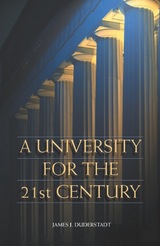 A University for the 21st Century
James J. Duderstadt
University of Michigan Press, 2000 From the former president of one of America's leading universities comes a comprehensive analysis of the challenges and opportunities facing higher education in America as we enter the twenty-first century. In A University for the Twenty-first Century, James J. Duderstadt discusses the array of powerful economic, social, and technological forces that are driving the rapid and profound change in American social institutions and universities in particular.
Change has always characterized the university as it has sought to preserve and propagate the intellectual achievements, the cultures, and the values of our civilization. However, the capacity of the university to change, through a process characterized by reflection, reaction, and consensus, simply may not be sufficient to allow the university to control its own destiny. Not only will social and technical change be a challenge to the American university, Duderstadt says, it will be the watchword for the years ahead. And with change will come unprecedented opportunities for those universities with the vision, the wisdom, and the courage to lead in the twenty-first century. The real question raised by this book is not whether higher education will be transformed, but rather how . . . and by whom.
James J. Duderstadt is President Emeritus and University Professor of Science and Engineering, University of Michigan.
 The University in Ruins
Bill Readings
Harvard University Press, 1996 It is no longer clear what role the University plays in society. The structure of the contemporary University is changing rapidly, and we have yet to understand what precisely these changes will mean. Is a new age dawning for the University, the renaissance of higher education under way? Or is the University in the twilight of its social function, the demise of higher education fast approaching?We can answer such questions only if we look carefully at the different roles the University has played historically and then imagine how it might be possible to live, and to think, amid the ruins of the University. Tracing the roots of the modern American University in German philosophy and in the work of British thinkers such as Newman and Arnold, Bill Readings argues that historically the integrity of the modern University has been linked to the nation-state, which it has served by promoting and protecting the idea of a national culture. But now the nation-state is in decline, and national culture no longer needs to be either promoted or protected. Increasingly, universities are turning into transnational corporations, and the idea of culture is being replaced by the discourse of "excellence." On the surface, this does not seem particularly pernicious.
The author cautions, however, that we should not embrace this techno-bureaucratic appeal too quickly. The new University of Excellence is a corporation driven by market forces, and, as such, is more interested in profit margins than in thought. Readings urges us to imagine how to think, without concession to corporate excellence or recourse to romantic nostalgia within an institution in ruins. The result is a passionate appeal for a new community of thinkers.
 The University in the Twenty-first Century: Teaching the New Enlightenment in the Digital Age
Hannes Klöpper
Central European University Press, 2016 This volume addresses the broad spectrum of challenges confronting the university of the 21st century. Elkana and Klöpper place special emphasis on the questions regarding the very idea and purposes of universities, especially as viewed through curriculum—what is taught—and pedagogy—how it is taught. The ideas recommended here for reform concern especially undergraduate or Bachelor degree programs in all areas of study, from the humanities and social sciences to the natural sciences, the technical fields, law, medicine, and other professions. The core thesis of this book rests on the emergence of a 'New Enlightenment', which requires a revolution in curriculum and teaching in order to translate the academic philosophy of global contextualism into universal practice or application. The university is asked to revamp teaching in order to foster critical thinking that would serve students their entire lives. This book calls for universities to become truly integrated rather than remaining collections of autonomous agencies more committed to competition among themselves than cooperation in the larger interest of learning.
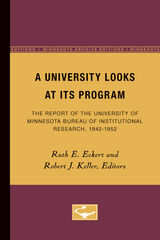 A University Looks at its Program: The Report of the University of Minnesota Bureau of Institutional Research, 1942-1952
Ruth Eckert
University of Minnesota Press, 1954
A University Looks at its Program was first published in 1954.Educational research, which first demonstrated its value in the fields of primary and secondary teaching, has been extended in comparatively recent times to the college and university level. The University of Minnesota has been a pioneer in the development of research methods to investigate problems of higher education. Its program of self-study was inaugurated in the early 1920’s under the far-seeing administration of the late Lotus D. Coffman.The 23 studies presented here are illustrative of the educational research conducted under the Minnesota plan during the decade of 1942 to 1952. They are a representative selection from a much larger number of studies sponsored during that period by the University’s Committee on Educational Research (now designated as the Committee on Institutional Research). The problems investigated are of four major types: those of a general character, such as enrollment trends or curriculum developments; those related to the undergraduate programs; those associated with specialized and graduate programs; and those connected with staff activities. The Minnesota self-study plan has been flexible and broad; no question has been considered too small to probe if its answer seemed likely to help some staff member or student group, and no proposal has been ruled out as over-ambitious if the information sought would help to build a sound program.These reports will be useful to college and university administrators, faculties, and research specialists for the clear picture they give of the scope and methods of a research program designed to help an educational institution in its long-term planning.
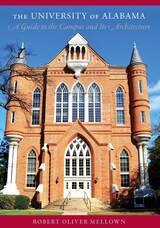 The University of Alabama: A Guide to the Campus and Its Architecture
Robert Oliver Mellown
University of Alabama Press, 2013 The University of Alabama: A Guide to the Campusand Its Architecture is a richly illustrated guidebook to the architecture and development of the University of Alabama’s campus as it has evolved over the last two centuries.
In 1988 the University of Alabama Press published Robert Oliver Mellown’s The University of Alabama: A Guide to the Campus, a culmination of a decade’s worth of research into both the facts and the legends surrounding the architecture, history, and traditions of the Capstone.
Over twenty years later, this new guide brings to light the numerous additions, expansions, and renovations the university has undergone on its spacious grounds in Tuscaloosa. In addition to updated sections devoted to the university’s historic landmarks—such as Foster Auditorium, where “the stand in the schoolhouse door” occurred; Denny Chimes,where the handprints and footprints of famous Tide athletes are memorialized in concrete; and the Gorgas House, which with stood the destruction of Union troops at the end of the Civil War—new sections account for the acquisition of Bryce Hospital’s campus, the expansions at Bryant-Denny Stadium to accommodate the growing Crimson Tide fan base, and the burgeoning student recreation facilities, playing fields, and residential communities.
Chapters are arranged into various campus tours for walking or driving—Antebellum, Victorian, Early Twentieth-Century, East Quad, West Quad, Science and Engineering Corridor, Student Life, Bryce, Medical, Southeast, Athletics, and Off Campus. Alumni, prospective students and their parents, new faculty, out-of-state visitors, and foreign dignitaries will all welcome this useful, compact, and colorful guide to one of the most beautiful campuses in the country.
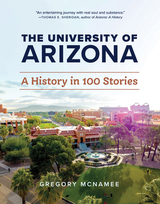 The University of Arizona: A History in 100 Stories
Gregory McNamee
University of Arizona Press, 2024 Southwest Books of the Year Top Pick
The University of Arizona: A History in 100 Stories is a celebration of the people, ideas, inventions, teaching, and structures that have been part of the school’s evolution from a small land-grant institution to an internationally renowned research institution. Drawing on half a century of connection with the University of Arizona as a student, staff member, and faculty member, Gregory McNamee presents a history through the lens of a hundred subjects.
That story begins in 1885, with the establishment of the school, which quickly proved itself to be a powerhouse in its foundational “four pillars”: agriculture and earth sciences, followed by astronomy and anthropology. In the years following World War II, those four pillars became ever more important to the University, even as countless other fields of study gained prominence: optical sciences, women’s studies, the humanities, mathematics, and more. This phenomenal institution has as its setting the Sonoran Desert, and, closer to home, to a built environment that is widely considered among the most scenic in the country, from the Historic District with its buildings that are more than a century old to the latest steel-and-glass constructions on the edges of the ever-expanding campus.
McNamee relates this history in an entertaining manner, peppering discussion of serious intellectual and institutional themes with lighter moments—the origins of the university's rivalry with Arizona State, the ghosts that are said to lurk about campus, and more. Wildcats everywhere will delight in McNamee’s celebration of the people, places, learning, books, and pastimes that have distinguished our school.
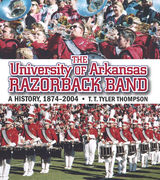 The University of Arkansas Razorback Band: A History, 1874-2004
T.T. Tyler Thompson
University of Arkansas Press, 2004 From the small Cadet Band that supported the school’s military department to the “best in sight and sound” Marching Razorbacks that are a staple of the university’s athletic program, the band has provided the soundtrack to the University of Arkansas. The rich history of the Razorback Band has spanned almost the entire existence of the University of Arkansas. This book documents the distinguished 130-year history of the band from its humble beginnings in 1874 as an adjunct to the military cadet squad to the major college organization that it is today. Both as a supporting player of the military and ROTC programs and of the athletic department, the Razorback Band has provided the spirited musical excitement required through the years, as well as performing concerts on its own for an appreciative student body and community audience with the Concert Band and Wind Ensemble. Add to that the parallel story of the evolution of an exciting basketball and volleyball spirit band—the Hogwild Band—and you have in this lavishly illustrated book the first-ever history of the music makers of the University of Arkansas.
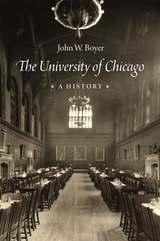 The University of Chicago: A History
John W. Boyer
University of Chicago Press, 2015 One of the most influential institutions of higher learning in the world, the University of Chicago has a powerful and distinct identity, and its name is synonymous with intellectual rigor. With nearly 170,000 alumni living and working in more than 150 countries, its impact is far-reaching and long-lasting.
With The University of Chicago: A History, John W. Boyer, Dean of the College since 1992, presents a deeply researched and comprehensive history of the university. Boyer has mined the archives, exploring the school’s complex and sometimes controversial past to set myth and hearsay apart from fact. The result is a fascinating narrative of a legendary academic community, one that brings to light the nature of its academic culture and curricula, the experience of its students, its engagement with Chicago’s civic community, and the conditions that have enabled the university to survive and sustain itself through decades of change.
Boyer’s extensive research shows that the University of Chicago’s identity is profoundly interwoven with its history, and that history is unique in the annals of American higher education. After a little-known false start in the mid-nineteenth century, it achieved remarkable early successes, yet in the 1950s it faced a collapse of undergraduate enrollment, which proved fiscally debilitating for decades. Throughout, the university retained its fierce commitment to a distinctive, intense academic culture marked by intellectual merit and free debate, allowing it to rise to international acclaim. Today it maintains a strong obligation to serve the larger community through its connections to alumni, to the city of Chicago, and increasingly to its global community.
Published to coincide with the 125th anniversary of the university, this must-have reference will appeal to alumni and anyone interested in the history of higher education of the United States.
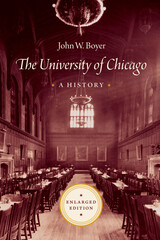 The University of Chicago: A History
John W. Boyer
University of Chicago Press, 2024 An expanded narrative of the rich, unique history of the University of Chicago.
One of the most influential institutions of higher learning in the world, the University of Chicago has a powerful and distinct identity, and its name is synonymous with intellectual rigor. With nearly 170,000 alumni living and working in more than one hundred and fifty countries, its impact is far-reaching and long-lasting.
With The University of Chicago: A History, John W. Boyer, Dean of the College from 1992 to 2023, thoroughly engages with the history and the lived politics of the university. Boyer presents a history of a complex academic community, focusing on the nature of its academic culture and curricula, the experience of its students, its engagement with Chicago’s civic community, and the resources and conditions that have enabled the university to sustain itself through decades of change. He has mined the archives, exploring the school’s complex and sometimes controversial past to set myth and hearsay apart from fact.
Boyer’s extensive research shows that the University of Chicago’s identity is profoundly interwoven with its history, and that history is unique in the annals of American higher education. After a little-known false start in the mid-nineteenth century, it achieved remarkable early successes, yet in the 1950s it faced a collapse of undergraduate enrollment, which proved fiscally debilitating for decades. Throughout, the university retained its fierce commitment to a distinctive, intense academic culture marked by intellectual merit and free debate, allowing it to rise to international acclaim. Today it maintains a strong obligation to serve the larger community through its connections to alumni, to the city of Chicago, and increasingly to its global community. Boyer’s tale is filled with larger-than-life characters—John D. Rockefeller, Robert Maynard Hutchins, and many other famous figures among them—and episodes that reveal the establishment and rise of today’s institution.
Newly updated, this edition extends through the presidency of Robert Zimmer, whose long tenure was marked by significant developments and controversies over subjects as varied as free speech, medical inequity, and community relations.
University of Chicago Graduate Problems in Physics with Solutions
Jeremiah A. Cronin, David F. Greenberg, and Valentine L. Telegdi
University of Chicago Press, 1979 University of Chicago Graduate Problems in Physics covers a broad range of topics, from simple mechanics to nuclear physics. The problems presented are intriguing ones, unlike many examination questions, and physical concepts are emphasized in the solutions.
Many distinguished members of the Department of Physics and the Enrico Fermi Institute at the University of Chicago have served on the candidacy examination committees and have, therefore, contributed to the preparation of problems which have been selected for inclusion in this volume. Among these are Morrell H. Cohen, Enrico Fermi, Murray Gell-Mann, Roger Hildebrand, Robert S. Mulliken, John Simpson, and Edward Teller.
 University of Chicago Readings in Western Civilization, Volume 1: The Greek Polis
Edited by Arthur W. H. Adkins and Peter White
University of Chicago Press, 1986 The University of Chicago Readings in Western Civilization (nine volumes) makes available to students and teachers a unique selection of primary documents, many in new translations. These readings, prepared for the highly praised Western civilization sequence at the University of Chicago, were chosen by an outstanding group of scholars whose experience teaching that course spans almost four decades. Each volume includes rarely anthologized selections as well as standard, more familiar texts; a bibliography of recommended parallel readings; and introductions providing background for the selections. Beginning with Periclean Athens and concluding with twentieth-century Europe, these source materials enable teachers and students to explore a variety of critical approaches to important events and themes in Western history.
Individual volumes provide essential background reading for courses covering specific eras and periods. The complete nine-volume series is ideal for general courses in history and Western civilization sequences.
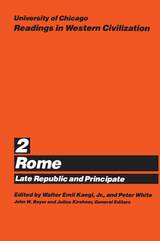 University of Chicago Readings in Western Civilization, Volume 2: Rome: Late Republic and Principate
Edited by Walter Emil Kaegi Jr. and Peter White
University of Chicago Press, 1986 The University of Chicago Readings in Western Civilization (nine volumes) makes available to students and teachers a unique selection of primary documents, many in new translations. These readings, prepared for the highly praised Western civilization sequence at the University of Chicago, were chosen by an outstanding group of scholars whose experience teaching that course spans almost four decades. Each volume includes rarely anthologized selections as well as standard, more familiar texts; a bibliography of recommended parallel readings; and introductions providing background for the selections. Beginning with Periclean Athens and concluding with twentieth-century Europe, these source materials enable teachers and students to explore a variety of critical approaches to important events and themes in Western history.
Individual volumes provide essential background reading for courses covering specific eras and periods. The complete nine-volume series is ideal for general courses in history and Western civilization sequences.
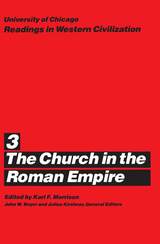 University of Chicago Readings in Western Civilization, Volume 3: The Church in the Roman Empire
Edited by Karl F. Morrison
University of Chicago Press, 1986 The University of Chicago Readings in Western Civilization (nine volumes) makes available to students and teachers a unique selection of primary documents, many in new translations. These readings, prepared for the highly praised Western civilization sequence at the University of Chicago, were chosen by an outstanding group of scholars whose experience teaching that course spans almost four decades. Each volume includes rarely anthologized selections as well as standard, more familiar texts; a bibliography of recommended parallel readings; and introductions providing background for the selections. Beginning with Periclean Athens and concluding with twentieth-century Europe, these source materials enable teachers and students to explore a variety of critical approaches to important events and themes in Western history.
Individual volumes provide essential background reading for courses covering specific eras and periods. The complete nine-volume series is ideal for general courses in history and Western civilization sequences.
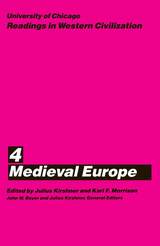 University of Chicago Readings in Western Civilization, Volume 4: Medieval Europe
Edited by Julius Kirshner and Karl F. Morrison
University of Chicago Press, 1986 The University of Chicago Readings in Western Civilization (nine volumes) makes available to students and teachers a unique selection of primary documents, many in new translations. These readings, prepared for the highly praised Western civilization sequence at the University of Chicago, were chosen by an outstanding group of scholars whose experience teaching that course spans almost four decades. Each volume includes rarely anthologized selections as well as standard, more familiar texts; a bibliography of recommended parallel readings; and introductions providing background for the selections. Beginning with Periclean Athens and concluding with twentieth-century Europe, these source materials enable teachers and students to explore a variety of critical approaches to important events and themes in Western history.
Individual volumes provide essential background reading for courses covering specific eras and periods. The complete nine-volume series is ideal for general courses in history and Western civilization sequences.
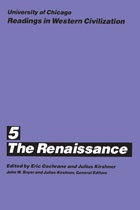 University of Chicago Readings in Western Civilization, Volume 5: The Renaissance
Edited by Eric Cochrane and Julius Kirshner
University of Chicago Press, 1986 The University of Chicago Readings in Western Civilization (nine volumes) makes available to students and teachers a unique selection of primary documents, many in new translations. These readings, prepared for the highly praised Western civilization sequence at the University of Chicago, were chosen by an outstanding group of scholars whose experience teaching that course spans almost four decades. Each volume includes rarely anthologized selections as well as standard, more familiar texts; a bibliography of recommended parallel readings; and introductions providing background for the selections. Beginning with Periclean Athens and concluding with twentieth-century Europe, these source materials enable teachers and students to explore a variety of critical approaches to important events and themes in Western history.
Individual volumes provide essential background reading for courses covering specific eras and periods. The complete nine-volume series is ideal for general courses in history and Western civilization sequences.
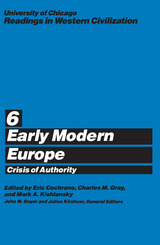 University of Chicago Readings in Western Civilization, Volume 6: Early Modern Europe: Crisis of Authority
Edited by Eric Cochrane, Charles M. Gray, and Mark Kishlansky
University of Chicago Press, 1987 The University of Chicago Readings in Western Civilization (nine volumes) makes available to students and teachers a unique selection of primary documents, many in new translations. These readings, prepared for the highly praised Western civilization sequence at the University of Chicago, were chosen by an outstanding group of scholars whose experience teaching that course spans almost four decades. Each volume includes rarely anthologized selections as well as standard, more familiar texts; a bibliography of recommended parallel readings; and introductions providing background for the selections. Beginning with Periclean Athens and concluding with twentieth-century Europe, these source materials enable teachers and students to explore a variety of critical approaches to important events and themes in Western history.
Individual volumes provide essential background reading for courses covering specific eras and periods. The complete nine-volume series is ideal for general courses in history and Western civilization sequences.
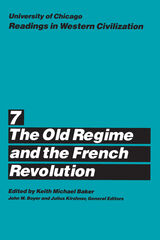 University of Chicago Readings in Western Civilization, Volume 7: The Old Regime and the French Revolution
Edited by Keith M. Baker
University of Chicago Press, 1987 A collection of key readings and documents crucial for understanding the Old Regime and the French Revolution
The University of Chicago Readings in Western Civilization series makes available to students and teachers a unique selection of primary documents, many in new translations. These readings, prepared for the highly praised Western civilization sequence at the University of Chicago, were chosen by an outstanding group of scholars whose experience teaching that course spans almost four decades. Each volume includes rarely anthologized selections as well as standard, more familiar texts; a bibliography of recommended parallel readings; and introductions providing background for the selections. Beginning with Periclean Athens and concluding with twentieth-century Europe, these source materials enable teachers and students to explore a variety of critical approaches to important events and themes in Western history.
Individual volumes provide essential background reading for courses covering specific eras and periods. The complete nine-volume series is ideal for general courses in history and Western civilization sequences.
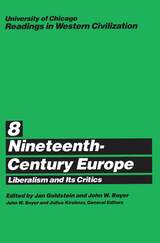 University of Chicago Readings in Western Civilization, Volume 8: Nineteenth-Century Europe: Liberalism and its Critics
Edited by Jan E. Goldstein and John W. Boyer
University of Chicago Press, 1987 The University of Chicago Readings in Western Civilization (nine volumes) makes available to students and teachers a unique selection of primary documents, many in new translations. These readings, prepared for the highly praised Western civilization sequence at the University of Chicago, were chosen by an outstanding group of scholars whose experience teaching that course spans almost four decades. Each volume includes rarely anthologized selections as well as standard, more familiar texts; a bibliography of recommended parallel readings; and introductions providing background for the selections. Beginning with Periclean Athens and concluding with twentieth-century Europe, these source materials enable teachers and students to explore a variety of critical approaches to important events and themes in Western history.
Individual volumes provide essential background reading for courses covering specific eras and periods. The complete nine-volume series is ideal for general courses in history and Western civilization sequences.
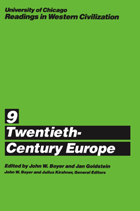 University of Chicago Readings in Western Civilization, Volume 9: Twentieth-Century Europe
Edited by John W. Boyer and Jan E. Goldstein
University of Chicago Press, 1987 The University of Chicago Readings in Western Civilization (nine volumes) makes available to students and teachers a unique selection of primary documents, many in new translations. These readings, prepared for the highly praised Western civilization sequence at the University of Chicago, were chosen by an outstanding group of scholars whose experience teaching that course spans almost four decades. Each volume includes rarely anthologized selections as well as standard, more familiar texts; a bibliography of recommended parallel readings; and introductions providing background for the selections. Beginning with Periclean Athens and concluding with twentieth-century Europe, these source materials enable teachers and students to explore a variety of critical approaches to important events and themes in Western history.
Individual volumes provide essential background reading for courses covering specific eras and periods. The complete nine-volume series is ideal for general courses in history and Western civilization sequences.
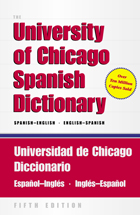 The University of Chicago Spanish Dictionary, Fifth Edition, Spanish-English, English-Spanish: Universidad de Chicago Diccionario Español-Inglés, Inglés-Español
Edited by David A. Pharies
University of Chicago Press, 2002 The University of Chicago Spanish Dictionary is the most popular dictionary of its kind. Its familiar name is known to millions of general readers, students, educators, and travelers. Improved for greater ease of use, and brought completely up to date, the fifth edition of The University of Chicago Spanish Dictionary is now more than ever the perfect resource for both language learners and experienced language users.
With thousands of added entries, the Dictionary builds on the features that have made it the leader in its field for more than fifty years: authority, scope, clarity, and conciseness. And with this edition, the Dictionary brilliantly captures the current core vocabularies of two rapidly changing—and increasingly connected—languages and cultures.
Entirely bilingual, the fifth edition focuses on two contemporary international languages—American English and a basic, worldwide Spanish that draws from both Latin American and Iberian sources.
Designed for a wide range of users, including travelers, businesspeople, students, teachers, and professionals, the new Dictionary is the essential first resource for speakers of both languages—from beginners to those at all other stages. Up to date, just comprehensive enough, and extraordinarily clear and easy to use, the new edition of The University of Chicago Spanish Dictionary stands alone. No other dictionary offers so many users so much help—or so much value.
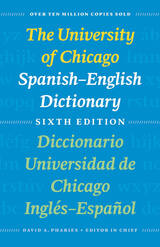 The University of Chicago Spanish-English Dictionary, Sixth Edition: Diccionario Universidad de Chicago Inglés-Español, Sexta Edición
David A. Pharies, Editor in Chief
University of Chicago Press, 2012 A concise, authoritative, up-to-date guide to Spanish and English
The University of Chicago Spanish–English Dictionary has long set the standard for concise bilingual dictionaries. Portable yet remarkably thorough, the dictionary enables users to find the precise equivalents of the words and phrases they seek. Completely bilingual, the book focuses on two contemporary international languages, American English and a worldwide Spanish rooted in both Latin American and Iberian sources. The sixth edition has been updated with six thousand new words and meanings selected for their frequency of use, rising popularity, and situational necessity. In order to best represent the dynamic and increasingly connected cultures of three continents, this edition features enhanced coverage of the vocabulary associated with four areas of increasing global importance: medicine, business, digital technology, and sports. Clear, precise, and easy to use, The University of Chicago Spanish–English Dictionary continues to serve as the essential reference for students, travelers, business people, and everyone interested in building their linguistic proficiency in both Spanish and English.
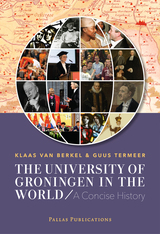 The University of Groningen in the World: A Concise History
Klaas van Berkel
Amsterdam University Press, 2021 The University of Groningen has been an international university since its foundation in 1614. The first professors formed a rich international community, and many students came from outside the Netherlands, especially from areas now belonging to Germany. Internationalization, a popular slogan nowadays, is therefore nothing new, but its meaning has changed over time. How did the University of Groningen grow from a provincial institution established for religious reasons into a top-100 university with 36,000 students, of whom 25% come from abroad and almost half of the academic staff is of foreign descent? What is the identity of this four-century-old university that is still strongly anchored in the northern part of the Netherlands but that also has a mind that is open to the world? The history of the university, as told by Klaas van Berkel and Guus Termeer, ends with a short paragraph on the impact of the corona crisis.
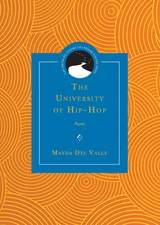 The University of Hip-Hop: Poems
Mayda Del Valle, foreword by Chris Abani
Northwestern University Press, 2017 The University of Hip-Hop is a love letter to the city of Chicago, or, more specifically, to Chicago at a particular moment in the poet's life. It is a meditation on movement and migration that asks what it means to leave home, how to take home with you, and how to build a new home elsewhere. These poems invoke nostalgia tempered with the knowledge that one cannot return to the past. They employ tonal and structural variations that account for said nostalgia without risking naïveté, taking all the influence of that time (hope, youth, love, music, art, and engagement) as a formal device, yet one filtered through the condensation of a current, more mature and nuanced understanding. The worldview learned then is employed in the now and frames the approach to the work, moving through formal registers that include spoken word, American lyric and narrative traditions, experimental thrusts, and documentary honed with the edge of hip-hop.
 The University of Illinois, 1894-1904: THE SHAPING OF THE UNIVERSITY
Winton U. Solberg
University of Illinois Press, 2000 The distinguished historian Winton U. Solberg presents a detailed case study of one institution's transformation into a modern American university.
The years 1894 to 1904 mark the stormy tenure of Andrew S. Draper as president of the University of Illinois. Draper, a successful superintendent of schools with no college or university experience and no credentials as a post-secondary administrator, presided over many crucial improvements in the university's physical plant, curricula, and other areas. However, he failed to infuse the university with a spirit of cohesion, and his term as president was fraught with conflict.
From his inauguration on, the autocratic Draper collided with deans and faculty who opposed both the substance of his changes and the manner in which he presented and implemented them.
This volume closely examines the Draper years from the perspectives of faculty, students, and administrators. Solberg outlines the administrative, faculty, staff, and physical infrastructure. He also reveals a vibrant and varied student life, including a whirl of social activities, literary societies, intercollegiate debate and athletics, hazing, religion, and increasingly prominent fraternities.
A sharply delineated and detailed picture of a university in transition, The University of Illinois, 1894-1904 traces the school's shift from an institution known primarily as a training ground for engineers to a full-fledged university poised to compete on the national level.
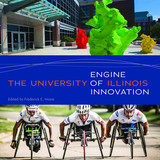 The University of Illinois: Engine of Innovation
Edited by Frederick E. Hoxie
University of Illinois Press, 2017 The founding of the university in 1867 created a unique community in what had been a prairie. Within a few years, this creative mix of teachers and scholars produced innovations in agriculture, engineering and the arts that challenged old ideas and stimulated dynamic new industries. Projects ranging from the Mosaic web browser to the discovery of Archaea and pioneering triumphs in women's education and wheelchair accessibility have helped shape the university's mission into a double helix of innovation and real-world change. These essays explore the university's celebrated accomplishments and historic legacy, candidly assessing both its successes and its setbacks. Experts and students tell the eye-opening stories of campus legends and overlooked game-changers, of astonishing technical and social invention, of incubators of progress as diverse as the Beckman Institute and Ebertfest. Contributors: James R. Barrett, George O. Batzli, Claire Benjamin, Jeffrey D. Brawn, Jimena Canales, Stephanie A. Dick, Poshek Fu, Marcelo H. Garcia, Lillian Hoddeson, Harry Liebersohn, Claudia Lutz, Kathleen Mapes, Vicki McKinney, Elisa Miller, Robert Michael Morrissey, Bryan E. Norwood, Elizabeth H. Pleck, Leslie J. Reagan, Susan M. Rigdon, David Rosenboom, Katherine Skwarczek, Winton U. Solberg, Carol Spindel, William F. Tracy, and Joy Ann Williamson-Lott.
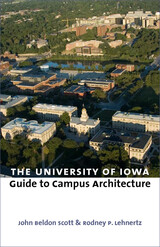 The University of Iowa Guide to Campus Architecture
John Beldon Scott
University of Iowa Press, 2006 The University of Iowa boasts an outstanding ensemble of buildings whose stylistic diversity reflects the breadth of Iowa’s contributions to research, education, and creative activities. In this first comprehensive guide to the university’s architecture, authors John Scott and Rodney Lehnertz reveal the artistic integrity, intellectual inspiration, and cutting-edge function of the campus buildings.Scott and Lehnertz highlight seventy-eight buildings that they consider architecturally significant, from the Greek Revival style of Old Capitol at the center of the Pentacrest, designed by John Francis Rague of Springfield, Illinois, to Art Building West, a work of art in itself designed by Steven Holl of New York City. The buildings are arranged in eleven campus zones, each illustrated with a map: Pentacrest, Iowa Avenue Campus, Main Campus North, Main Campus South, River Valley Campus, Arts Campus, Near West Campus, Medical Campus, University of Iowa Hospitals and Clinics Campus, Athletics Campus, and Oakdale Research Campus. Each building is presented with one or two pages of text, giving its architectural history and its noteworthy features, and one to three photographs, most of which were taken especially for this publication. The introductory essays provide both personal recollections and historical information about the diverse styles of campus architecture. Particularly valuable are the lists of all the extant campus buildings that the authors considered worthy of inclusion organized by building names, the names of their principal and project architects, and the date completed or occupied; another list contains information about notable campus sculptures. Also included are an essay about long-time campus architect George Horner and a highly useful glossary.Current students and their parents, alumni, and professional and amateur architecture enthusiasts will appreciate this copiously illustrated, accessible, and informative tour of the University of Iowa’s distinctive campus.
The University of Iowa Guide to Campus Architecture, Second Edition
John Beldon Scott and Rodney P. Lehnertz
University of Iowa Press, 2016 In this guide to the University of Iowa’s architecture, revised and updated to reflect the numerous changes following the 2008 flood, John Beldon Scott and Rodney P. Lehnertz discuss and illustrate an ensemble of buildings whose stylistic diversity reflects the breadth of Iowa’s contributions to research, education, and creative activities. Current students and their parents, alumni, and professional and amateur architecture enthusiasts will appreciate this informative tour of the university’s distinctive campus.
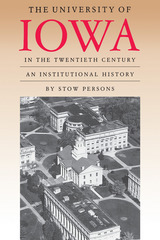 The University of Iowa in the Twentieth Century: An Institutional History
Stow Persons
University of Iowa Press, 1990 In order to write this exhaustive history, Persons focused his research on the extensive university archive of personal correspondence and reminiscences. The result is a study rich in personality, character, and insight, complete with political and economic drama. The definitive analytical history of the school, this volume captures the vigor and color of the people it chronicles. Organized by president, this history follows the school’s struggle to establish a major public university in an agricultural state. Persons shows how George MacLean introduced the institutional forms of the modern university and oriented it toward the major state university of the upper Midwest. Walter Jessup was successful in strengthening the faculty and laying the foundations of the modern physical plant. Howard Bowne’s attempt to revivify the school was cut short by the campus uprisings of 1968 to 1970. Since no part of the university has undergone more striking changes than the College of Medicine, Persons has devoted a chapter to the efforts to find an effective organizational pattern for that college. And, in the area of undergraduate education, he outlines the struggle to define and implement a successful general education program. More than just a recounting of past issues and accomplishments, The University of Iowa in the Twentieth Century also serves to identify a pattern of historical development which will provide a context in which the present issues facing the school can be most fruitfully addressed. This book should be read by everyone interested in the development of the university, educators, higher education administrators, and all those captivated by Iowa history.
 The University of Manitoba: An Illustrated History
J.M. Bumsted
University of Manitoba Press, 2001 Established in 1877, just seven years after the founding of the province itself, the University of Manitoba has grown to become an international centre of research and study. It is the birthplace of discoveries such as the cure for Rh disease of newborns and the development of Canola, and its alumni include Marshal McLuhan, Margaret Laurence, Monty Hall, Israel Asper and Ovide Mercredi.Historian J.M. Bumsted looks at how the university was forged out of the assembly of several, small, denominational colleges, and how it survived and even thrived during challenges such as the 1932 defalcation and the 1950 Manitoba flood. He gives special attention to student life at the university, tracing the changes, from Freshie initiations in the 1920s and student musicals in the 1950s to the activism of the 1960s and 1970s.The University of Manitoba: An Illustrated History is an entertaining and lively social history of an institution whose development has reflected the changes of society at large.
 The University of Michigan & China, 1845 – 2017
Neal McKenna
Michigan Publishing, 2017 The University of Michigan and China, 1845-2017 traces the long and important historical relationships that have existed between U-M and China. From U-M graduates doing missionary work in China in 1845 to the multitude of innovative and successful partnerships that U-M maintains with many Chinese universities and institutions today, The University of Michigan has a long, rich and varied history with China. This book traces that history, highlighting some of the more notable partnerships and persona that have brought about this strong and enduring relationship.
Throughout the last two centuries U.S. administrations from President Lincoln to President Clinton have relied on U-M leaders and faculty to engage China and develop political and cultural relationships. The University of Michigan was one of the first universities in the U.S. to enroll Chinese students and has many prominent Chinese graduates, including a Nobel Laureate and the first female college president in China.
As U-M celebrates its own bicentennial, this book recounts the university's considerable history with Chinese governments, people and culture. The book also updates readers on the current and ongoing partnerships between different U-M departments and schools with Chinese institutions, and provides a list of several prominent Chinese graduates of the University of Michigan.
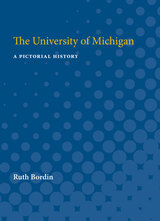 The University of Michigan: A Pictorial History
Ruth Bordin
University of Michigan Press, 1967 Here in more than 200 pictures are the people, places, and events that shaped the first 150 years of The University of Michigan. The University of Michigan: A Pictorial History is an exciting visual panorama of change and growth marking a century and a half of educational leadership.The pictures in this book bring to mind the struggles and achievements of the University from its visionary beginning to the sesquicentennial year. There are pictures of student life and activities, organizations, dramatic presentations, social affairs, athletic contests, classrooms, buildings new and old, academic ceremonies, presidents, distinguished professors, and the campuses, which spread far beyond the boundaries of the original forty acres.Other pictures recall milestones in the University's history: expeditions to Africa and Antarctica, the announcement of the Salk vaccine, and the visit of John F. Kennedy, who first mentioned the idea of the Peace Corps on the steps of the University of Michigan Union.Bordin has written a brief text and picture legends that outline the University's history and add many colorful details. But the real story is in the pictures. They bring back to life the illustrious past of a great University.
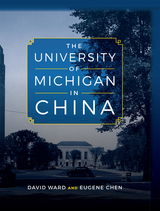 The University of Michigan in China
David Ward and Eugene Chen
Michigan Publishing, 2017 The friendship between the University of Michigan and China spans more than a century and a half. Through years of peace and years of war; through political turmoil and the shifting winds of public opinion; since the first years of U-M’s Ann Arbor campus and the last years of China’s Qing Dynasty, the University and China have been partners.
This book tells the story of twenty remarkable individuals, the country they transformed, and the University that helped them do it. There are many “firsts” in this book—first Chinese students at U-M, first female college president of China—and there are many “fathers” of disciplines: Wu Dayou, father of physics in China; Zheng Zuoxin, father of Chinese ornithology; Zeng Chengkui, father of marine botany.
While much has been written about these leaders and scholars in both English and Chinese, nowhere else is their collective story told or their shared bond with the University of Michigan celebrated.
The University of Michigan in China celebrates this nearly 200-year-old legacy.
The University of Michigan MBA/MA in Asian Studies Retrospection and Reflections: A Bicentennial Contribution
Linda Lim
Michigan Publishing, 2020 The University of Michigan dual-degree master’s program in Asian Studies and Business began in the 1980s and quickly developed into a dynamic training ground for international business experts. Professor Emerita Linda Lim provides an oral history of the program, including her reflections on decades of teaching and leadership in international business education. This book also features essays on business in Asia from graduates of the program, and reflections on the program from graduates, and photos of some of the faculty and graduates of the MBA/MA Asian Studies program throughout the years.
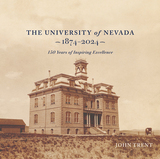 The University of Nevada, 1874-2024: 150 Years of Inspiring Excellence
John Trent
University of Nevada Press, 2024 With an uncertain beginning in the sparsely populated remote northern Nevada town of Elko, a preparatory school opened its doors in October 1874 through the Morrill Act that sought to establish land-grant universities across the nation. Seven students began their higher education experience with dreams of a better future, but they probably could not have predicted that their alma mater would one day become the University of Nevada, Reno, a nationally classified Carnegie R1 “Very High Research” institution.
As both the University’s student body and the state’s population grew, the campus was transferred to Reno in 1885-86 as an effort to secure the fledgling institution’s prospects for survival. Many of the initial class of thirty-five students resided in Morrill Hall, the only building on campus, where they also received instruction and ate their meals. As the University enhanced its academic offerings, enrollment grew to more than 1,000 students by the turn of the century. A strong belief that the University must always be changing and evolving to meet the needs of its students and answer the challenges of a particular era became the guiding forces behind the administration’s decision-making. With an increasingly diverse student body and one of the most productive academic faculties in the country, the little school on the hill expanded during its first 100 years to become a leading public university in the western United States.
Today, the University continues to achieve institutional benchmarks, including a record 5,000 graduates during the 2019–20 academic year. It is exactly this kind of student success that has always been at the heart of the Wolf Pack Family’s mission to help students find the path that is right for them, and beckon others to share in their journey.
The 150th anniversary book is published in honor of this milestone and highlights numerous parts of the University’s history, showcasing why the University of Nevada, Reno has truly been a catalyst for success and change throughout the state’s story.
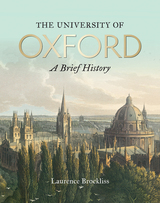 The University of Oxford: A Brief History
Laurence Brockliss
Bodleian Library Publishing, 2018 The University of Oxford is the third-oldest university in Europe and remains one of the greatest universities in the world. Institutions have waxed and waned over the centuries, but Oxford has always succeeded in reinventing itself to meet the demands of a new age.
This book offers a succinct illustrated account of the university’s colorful and controversial eight-hundred-year history, from medieval times through the Reformation and on to the nineteenth century, in which the foundations of the modern tutorial system were laid. It describes the extraordinary and influential people who shaped the development of the institution and helped to create today’s world-class research university.
Richly illustrated with archival material, prints, and portraits, this book explores how a university in a small provincial town rose to become one of the top universities in the world at the beginning of the twenty-first century.
 The University of Tennessee Southern: Rebirth of an Institution
Mark La Branche
University of Tennessee Press, 2024 A cup of coffee provided the impetus that changed the futures of the University of Tennessee System and a small, private Methodist school in southern Middle Tennessee. When UT System president Randy Boyd met with Martin Methodist College chancellor Mark La Branche for an early morning discussion of higher education in the state, the topic soon delved into new possibilities with the proposal of “What if . . . ?”
This book details the challenges as UT and Martin Methodist College began to explore a merger that would impact future generations of Tennesseans. Faculty and staff members share their thoughts and concerns as well as their preparations for the integration of two institutions of higher education with one passion of expanding educational opportunities for the residents of Tennessee.
The acquisition of one university by another is rare, and even rarer still is when it involves a public university system and a faith-based institution. In University of Tennessee Southern: The Rebirth of an Institution, the authors tell this historic story through the many steps taken to bring the new campus into being.
The University Socialist Club and the Contest for Malaya: Tangled Strands of Modernity
Kah Seng Loh, Edgar Liao, Cheng Tju Lim , and Guo Quan Seng
Amsterdam University Press, 2012 Using a wealth of material including interviews, official documents, and student writings, the authors recount the rise of newly independent states in postwar Malaya and Singapore through the engagements of a left-wing group of university student activists. The University Socialist Club and the Contest for Malaya brings to life various contemporary movements, including democratic, Marxist, socialist, ethnicity-based groups which seek to influence postcolonial Malaya, as well as their fluid relationships with one another, at a time when allies became enemies, and vice versa. An original and vital study, this volume delves into the complex mental worlds and historical milieu of political and student activism.
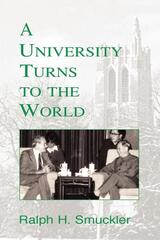 A University Turns to the World
Ralph H. Smuckler
Michigan State University Press, 2003 A University Turns to the World examines the growth of Michigan State University’s pacesetting International program beginning in 1956, when President John Hannah named the nation’s first international dean, Glen Taggart, to head a university-wide effort. In the years that followed, MSU’s technical assistance projects in Asia, Africa, and Latin America were an important contribution to economic growth and development, and they were integral to broad efforts to strengthen the international dimension at home. The faculty members who went to Okinawa, Colombia, Brazil, South Vietnam, and Pakistan in the early years defined important goals and they learned much. As the years passed, their experiences led to increased sensitivity to the complexities of development activity and the need for patience.
Smuckler’s leadership of the international program and intimate involvement in MSU’s work at home and abroad enable him to recapture the dreams and disappointments of the development promise. Ultimately, Smuckler demonstrates that the development programs of the mid-twentieth century paved the way for valuable new research activities and long-term mutually beneficial ties between MSU faculty and institutions and colleagues overseas.
 The University, Volume 27
Paul A. Bové, ed.
Duke University Press The essays collected in this issue of boundary 2 were written in response to a call for papers that would treat the contemporary university, in various regions and stages of formation around the world, in light of the interaction between local and global realities. Underlying this project is the assumption that profound changes in economy and world organization transform the function and value of universities in tension not only with the regional histories and forces in which particular universities function but also with what used to be called "the idea of the university." The authors of these essays approach this topic in two ways: some present the history and current situation of the university in a given place and politics, and some write of the new university’s political economy as the state withdraws support for higher education and hands the institutions over to entrepreneurial and transnational corporate culture. None of these essays defends the idea that the university pursues knowledge for its own sake. Yet there is a tinge of nostalgia for this idea, or at least for the idea that the university’s task is to educate, to destroy bias, to cultivate. Of course, such an idea remains the public justification for the existence of the university, especially in the advanced capitalist societies, whose higher classes benefit the most from the globalization of economic production.
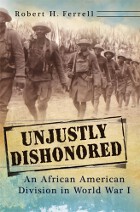 Unjustly Dishonored: An African American Division in World War I
Robert H. Ferrell
University of Missouri Press, 2011 For nearly one hundred years, the 92nd Division of the U.S. Army in World War I has been remembered as a military failure. The division should have been historically significant. It was the only African American division of the American Expeditionary Forces in France. Comprised of nearly twenty-eight thousand black soldiers, it fought in two sectors of the great battle of the Meuse-Argonne, the largest and most costly battle in all of U.S. history. Unfortunately, when part of the 368th Infantry Regiment collapsed in the battle’s first days, the entire division received a blow to its reputation from which it never recovered. In Unjustly Dishonored: An African American Division in World War I, Robert H. Ferrell challenges long-held assumptions and asserts that the 92nd, in fact, performed quite well militarily. His investigation was made possible by the recent recovery of a wealth of records by the National Archives. The retrieval of lost documents allowed access to hundreds of pages of interviews, mostly from the 92nd Division’s officers, that had never before been considered. In addition, the book uses the Army’s personal records from the Army War College, including the newly discovered report on the 92nd’s field artillery brigade by the enthusiastic commanding general. In the first of its sectors, the Argonne, the 92nd took its objective. Its engineer regiment was a large success, and when its artillery brigade got into action, it so pleased its general that he could not praise it enough. In the attack of General John J. Pershing’s Second Army during the last days of the war, the 92nd captured the Bois Frehaut, the best performance of any division of the Second Army. This book is the first full-length account of the actual accomplishments of the 92nd Division. By framing the military outfit’s reputation against cultural context, historical accounts, and social stigmas, the authorproves that the 92nd Division did not fail and made a valuable contribution to history that should, and now finally can, be acknowledged. Unjustly Dishonored fills a void in the scholarship on African American military history and World War I studies.
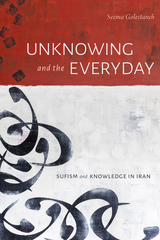 Unknowing and the Everyday: Sufism and Knowledge in Iran
Seema Golestaneh
Duke University Press, 2023 In Unknowing and the Everyday Seema Golestaneh examines how Sufi mystical experience in Iran shapes contemporary life. Central to this process is ma’rifat, or “unknowing”—the idea that, as it is ultimately impossible to fully understand the divine, humanity must operate from an engaged awareness that it knows nothing. Golestaneh shows that rather than considering ma’rifat an obstacle to intellectual engagement, Sufis embrace that there will always be that which they do not know. From this position, they affirm both the limits of human knowledge and the mysteries of the profane world. Through ethnographic case studies, Golestaneh traces the affective and sensory dimensions of ma’rifat in contexts such as the creation of collective Sufi spaces, the interpretation of Persian poetry, formulations of selfhood and non-selfhood, and the navigation of the socio-material realm. By outlining the relationship between ma’rifat and religious, aesthetic, and social life in Iran, Golestaneh demonstrates that for Sufis the outer bounds of human thought are the beginning rather than the limit.
 The Unknown Distance: From Consciousness to Conscience—Goethe to Camus
Edward Engelberg
Harvard University Press, 1972 Edward Engelberg argues that Conscience and Consciousness have slowly drifted apart from their once nearly identical meanings: inward knowledge of oneself. This process of separation, he shows, reached a critical point in the late eighteenth and nineteenth centuries, the age of "dualisms."
Tracing the evolution of the severance of Conscience from Consciousness, he demonstrates from a wide range of examples in literature and philosophy how such a division shaped the attitudes of important writers and thinkers. The study opens with the Romantics and closes with Kafka, Hesse, and Camus. It includes analyses of Hegel, Dostoevsky, James, Conrad, and Freud and brings together for comparison such pairings as Poe and Mann, Goethe and Wordsworth, Arnold and Nietzsche.
Engelberg concludes that the cleavage of Conscience from Consciousness is untenable. To dispossess Conscience, he asserts, man would also need to dispossess a full awareness, a full Consciousness; and a full Consciousness inevitably leads back to Conscience.
The Unknown Islands
Raul Brandão, Translated by David Brookshaw
Tagus Press, 2020 The Unknown Islands is considered one of the most beautiful works of travel literature in Portuguese and one of the most important homages to the Azorean archipelago. In the summer of 1924, Raul Brandão undertook a trip with other intellectuals through the Azores and Madeira. Fascinated with the landscapes of the islands and seduced by the people, he went on to pen this foundational text of Azorean literature—elegantly capturing the history, memory, and imaginary of this storied place.
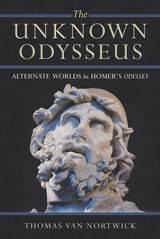 The Unknown Odysseus: Alternate Worlds in Homer's Odyssey
Thomas Van Nortwick
University of Michigan Press, 2009 The Unknown Odysseus is a study of how Homer creates two versions of his hero, one who is the triumphant protagonist of the revenge plot and another, more subversive, anonymous figure whose various personae exemplify an entirely different set of assumptions about the world through which each hero moves and about the shape and meaning of human life. Separating the two perspectives allows us to see more clearly how the poem's dual focus can begin to explain some of the notorious difficulties readers have encountered in thinking about the Odyssey. In The Unknown Odysseus, Thomas Van Nortwick offers the most complete exploration to date of the implications of Odysseus' divided nature, showing how it allows Homer to explore the riddles of human identity in a profound way that is not usually recognized by studies focusing on only one "real" hero in the narrative. This new perspective on the epic enriches the world of the poem in a way that will interest both general readers and classical scholars. ". . .an elegant and lucid critical study that is also a good introduction to the poem."
---David Quint, London Review of Books "Thomas Van Nortwick's eloquently written book will give the neophyte a clear interpretive path through the epic while reminding experienced readers why they should still care about the Odyssey's unresolved interpretive cruces. The Unknown Odysseus is not merely accessible, but a true pleasure to read."
---Lillian Doherty, University of Maryland "Contributing to an important new perspective on understanding the epic, Thomas Van Nortwick wishes to resist the dominant, even imperial narrative that tries so hard to trick, beguile, and even bully its listeners into accepting the inevitability of Odysseus' heroism."
---Victoria Pedrick, Georgetown University Thomas Van Nortwick is Nathan A. Greenberg Professor of Classics at Oberlin College and author of Somewhere I Have Never Travelled: The Second Self and the Hero's Journey in Ancient Epic (1992) and Oedipus: The Meaning of a Masculine Life (1998). Jacket art: Head of Odysseus from a sculptural group representing Odysseus killing Polyphemus in the Museo Archeologico Nazionale in Sperlonga, Italy. Photograph by Marie-Lan Nguyen.
The Unknown Quantity
Hermann Broch
Northwestern University Press, 2000 Mild and sensitive Richard Hieck endured a quietly difficult childhood in Germany. But from his father Richard inherited an interest in the night sky, learning to love the constellations and to take comfort in the strength of Orion and the warm radiance of Venus. His choice to pursue mathematics offers him the discipline he craved as a child.
Published in 1933, The Unknown Quantity is Hermann Broch's study of the underlying chaos-and finally the impossibility-of life within a society whose values are in decay. As Richard seeks to reconcile the conflicting demands of love and science, of passion and reason, societal and family values begin to undermine him and those in orbit around him.
The Unknown Rilke: Selected Poems
Rainer Maria Rilke
Oberlin College Press, 1990 Rilke's importance to the history of literature in the twentieth century is based on the power and memorability of his lyrics, and on his successful struggle to articulate a new vision of the human relation to the rest of creation. Wright’s brilliant translations of some of Rilke’s neglected poems are now widely admired. They are here enhanced by an additional selection and a new introduction by the translator.
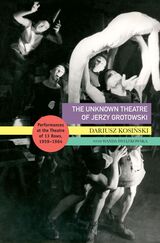 The Unknown Theatre of Jerzy Grotowski: Performances in the Theatre of 13 Rows, 1959–1964
Dariusz Kosinski and Wanda Swiatkowska
Seagull Books, 2025 Examines the previously unresearched formative years of Polish director Jerzy Grotowski’s career.
Polish director Jerzy Grotowski (1933–1999) was an international leader in experimental theater who became famous in the late 1960s for his revolutionary approach to audience involvement. This volume is devoted to Grotowski’s early work—the performances he directed in the Theatre of 13 Rows (later Laboratory Theatre of 13 Rows) between 1959 and 1964 when the theater was working in the provincial town Opole in south-western Poland. Having decided to work in his own independent theater, Grotowski moved to Opole in September 1956 and developed his ideas with young, inexperienced actors, creating important performances that foreshadowed his renowned masterpieces of the late 1960s.
In The Unknown Theatre of Jerzy Grotowski, Dariusz Kosiński and Wanda Świątkowska reconstruct, analyze, and interpret each of the nine performances directed by Grotowski over this period: from Orpheus based onJean Cocteau (1959) to Hamlet Study based on Stanisław Wyspiański (1964). Previously mentioned mainly in the context of the development of Grotowski’s method, these performances dealt with important social, political, and philosophical problems of postwar and post-Holocaust Poland. Grotowski also used these performances to experiment with the forces and problems that he later tried to be discreet about, such as sexuality.
Revealing unnoticed and forgotten aspects of Grotowski’s theater, this landmark book presents new materials and perspectives that give fresh life to the study of a genius of twentieth-century theater.
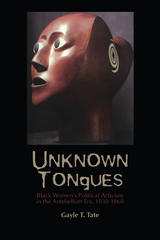 Unknown Tongues: Black Women's Political Activism in the Antebellum Era, 1830-1860
Gayle T. Tate
Michigan State University Press, 2003 Unknown Tongues examines the social and economic factors of northern industrialization, social reform, and black nationalism, all of which undergirded black women’s political consciousness during the decades before the American Civil War. The linkages between black women’s roles in the “culture of resistance” in slave communities and their transformations in the urban market economy fueled the development of black women’s political consciousness. As community activists and then as abolitionists, black urban women organized and protested against slavery, racism, sexism, and its attendant ills. Driven by market forces of nascent capitalism, black women created broad- based protest responses to the white power structure. Unknown Tongues explores the material realities that underpinned black women’s political development as well as the transformative stages of their political consciousness and activity.
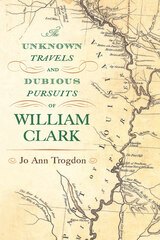 The Unknown Travels and Dubious Pursuits of William Clark
Jo Ann Trogdon
University of Missouri Press, 2023 In 1798—more than five years before he led the epic western journey that would make him and Meriwether Lewis national heroes—William Clark set off by flatboat from his Louisville, Kentucky home with a cargo of tobacco and furs to sell downriver in Spanish New Orleans. He also carried with him a leather-trimmed journal to record his travels and notes on his activities.
In this vivid history, Jo Ann Trogdon reveals William Clark’s highly questionable activities during the years before his famous journey west of the Mississippi. Delving into the details of Clark’s diary and ledger entries, Trogdon investigates evidence linking Clark to a series of plots—often called the Spanish Conspiracy—in which corrupt officials sought to line their pockets with Spanish money and to separate Kentucky from the United States. The Unknown Travels and Dubious Pursuits of William Clark gives readers a more complex portrait of the American icon than has been previously written.
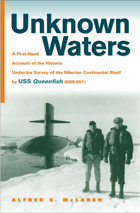 Unknown Waters: A First-Hand Account of the Historic Under-Ice Survey of the Siberian Continental Shelf by USS Queenfish (SSN-651)
Alfred S. McLaren
University of Alabama Press, 2008 “A first-person view of submarine under-ice operations that appears in very few other works.” —Gary E. Weir, author of Rising Tide: The Untold Story of the Russian Submarines that Fought the Cold War Unknown Waters tells the story of the brave officers and men of the nuclear attack submarine USS Queenfish (SSN-651), who made the first survey of an extremely important and remote region of the Arctic Ocean. The unpredictability of deep-draft sea ice, shallow water, and possible Soviet discovery, all played a dramatic part in this engrossing 1970 voyage. Covering 3,100 miles over a period of some 20 days at a laborious average speed of 6.5 knots or less, the attack submarine carefully threaded its way through innumerable underwater canyons of ice and over irregular seafloors, at one point becoming entrapped in an “ice garage.” Only cool thinking and skillful maneuvering of the nearly 5,000-ton vessel enabled a successful exit.
 Unlawful Violence: Mexican Law and Cultural Production
Rebecca Janzen
Vanderbilt University Press, 2022 Violence has only increased in Mexico since 2000: 23,000 murders were recorded in 2016, and 29,168 in 2017.
The abundance of laws and constitutional amendments that have cropped up in response are mirrored in Mexico's fragmented cultural production of the same period. Contemporary Mexican literature grapples with this splintered reality through non-linear stories from multiple perspectives, often told through shifts in time. The novels, such as Jorge Volpi's Una novela criminal [A Novel Crime] (2018) and Julián Herbert's La casa del dolor ajeno [The House of the Pain of Others] (2015) take multiple perspectives and follow non-linear plotlines; other examples, such as the very short stories in ¡Basta! 100 mujeres contra la violencia de género [Enough! 100 Women against Gender-Based Violence] (2013), present perspectives from multiple authors.
Few scholars compare cultural production and legal texts in situations like Mexico, where extreme violence coexists with a high number of human rights laws. Unlawful Violence measures fictional accounts of human rights against new laws that include constitutional amendments to reform legal proceedings, laws that protect children, laws that condemn violence against women, and laws that protect migrants and Indigenous peoples. It also explores debates about these laws in the Mexican house of representatives and senate, as well as interactions between the law and the Mexican public.
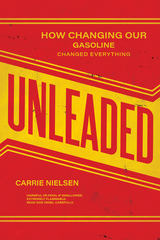 Unleaded: How Changing Our Gasoline Changed Everything
Carrie Nielsen
Rutgers University Press, 2021 When leaded gasoline was first developed in the 1920s, medical experts were quick to warn of the public health catastrophes it would cause. Yet government regulators did not heed their advice, and for more than half a century, nearly all cars used leaded gasoline, which contributed to a nationwide epidemic of lead poisoning. By the 1970s, 99.8% of American children had significantly elevated levels of lead in their blood.
Unleaded tells the story of how crusading scientists and activists convinced the U.S. government to ban lead additives in gasoline. It also reveals how, for nearly fifty years, scientific experts paid by the oil and mining industries abused their authority to convince the public that leaded gasoline was perfectly harmless.
Combining environmental history, sociology, and neuroscience, Carrie Nielsen explores how lead exposure affects the developing brains of children and is linked to social problems including academic failure, teen pregnancies, and violent crime. She also shows how, even after the nationwide outrage over Flint’s polluted water, many poor and minority communities and communities of color across the United States still have dangerously high lead levels. Unleaded vividly depicts the importance of sound science and strong environmental regulations to protect our nation’s most vulnerable populations.
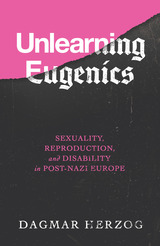 Unlearning Eugenics: Sexuality, Reproduction, and Disability in Post-Nazi Europe
Dagmar Herzog
University of Wisconsin Press, 2020 Since the defeat of the Nazi Third Reich and the end of its horrific eugenics policies, battles over the politics of life, sex, and death have continued and evolved. Dagmar Herzog documents how reproductive rights and disability rights, both latecomers to the postwar human rights canon, came to be seen as competing—with unexpected consequences.
Bringing together the latest findings in Holocaust studies, the history of religion, and the history of sexuality in postwar—and now also postcommunist—Europe, Unlearning Eugenics shows how central the controversies over sexuality, reproduction, and disability have been to broader processes of secularization and religious renewal. Herzog also restores to the historical record a revelatory array of activists: from Catholic and Protestant theologians who defended abortion rights in the 1960s–70s to historians in the 1980s–90s who uncovered the long-suppressed connections between the mass murder of the disabled and the Holocaust of European Jewry; from feminists involved in the militant "cripple movement" of the 1980s to lawyers working for right-wing NGOs in the 2000s; and from a handful of pioneers in the 1940s–60s committed to living in intentional community with individuals with cognitive disability to present-day disability self-advocates.
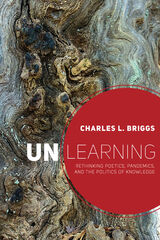 Unlearning: Rethinking Poetics, Pandemics, and the Politics of Knowledge
Charles L. Briggs
Utah State University Press, 2021 A provocative theoretical synthesis by renowned folklorist and anthropologist Charles L. Briggs, Unlearning questions intellectual foundations and charts new paths forward. Briggs argues, through an expansive look back at his own influential works as well as critical readings of the field, that scholars can disrupt existing social and discourse theories across disciplines when they collaborate with theorists whose insights are not constrained by the bounds of scholarship.
Eschewing narrow Eurocentric modes of explanation and research foci, Briggs brings together colonialism, health, media, and psychoanalysis to rethink classic work on poetics and performance that revolutionized linguistic anthropology, folkloristics, media studies, communication, and other fields. Beginning with a candid memoir that credits the mentors whose disconcerting insights prompted him to upend existing scholarly approaches, Briggs combines his childhood experiences in New Mexico with his work in graduate school, his ethnography in Venezuela working with Indigenous peoples, and his contemporary work—which is heavily weighted in medical folklore.
Unlearning offers students, emerging scholars, and veteran researchers alike a guide for turning ethnographic objects into provocations for transforming time-worn theories and objects of analysis into sources of scholarly creativity, deep personal engagement, and efforts to confront unconscionable racial inequities. It will be of significant interest to folklorists, anthropologists, and social theorists and will stimulate conversations across these disciplines.
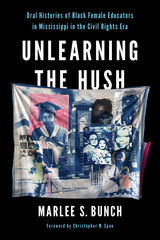 Unlearning the Hush: Oral Histories of Black Female Educators in Mississippi in the Civil Rights Era
Marlee S. Bunch Foreword by Christopher M. Span
University of Illinois Press, 2025 Despite significant challenges and historical opposition, Black female teachers stood at the forefront of advocating for and providing education to Black students. Their dedication not only improved opportunities for Black communities but also influenced changes in U.S. laws and societal expectations. Marlee S. Bunch draws on oral histories to illuminate the interior lives of Black female educators who taught before and after desegregation in Hattiesburg, Mississippi. In their own voices, these women detail the hurdles they faced guiding students through Jim Crow laws and Civil Rights–era desegregation. Bunch unearths the personal stories of teaching and activism during a historic time that included the Brown v. Board of Education decision and whites’ massive resistance to desegregation. The educators highlight the significance of the Black community and the role of Black homes in fostering student success and community cohesion. In addition, Bunch looks at the legacies of Black educators and the work still to be done. Visual artwork and poetry complement the text. Inspiring and immersive, Unlearning the Hush blends personal memory with Civil Rights history to document the pivotal role Black women played in education during a transformative and charged period in American history.
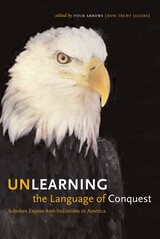 Unlearning the Language of Conquest: Scholars Expose Anti-Indianism in America
Edited by Four Arrows (Don Trent Jacobs)
University of Texas Press, 2006 Responding to anti-Indianism in America, the wide-ranging perspectives culled in Unlearning the Language of Conquest present a provocative account of the contemporary hegemony still at work today, whether conscious or unconscious. Four Arrows has gathered a rich collection of voices and topics, including: - Waziyatawin Angela Cavender Wilson's "Burning Down the House: Laura Ingalls Wilder and American Colonialism," which probes the mentality of hatred woven within the pages of this iconographic children's literature.
- Vine Deloria's "Conquest Masquerading as Law," examining the effect of anti-Indian prejudice on decisions in U.S. federal law.
- David N. Gibb's "The Question of Whitewashing in American History and Social Science," featuring a candid discussion of the spurious relationship between sources of academic funding and the types of research allowed or discouraged.
- Barbara Alice Mann's "Where Are Your Women? Missing in Action," displaying the exclusion of Native American women in curricula that purport to illuminate the history of Indigenous Peoples.
Bringing to light crucial information and perspectives on an aspect of humanity that pervades not only U.S. history but also current sustainability, sociology, and the ability to craft accurate understandings of the population as a whole, Unlearning the Language of Conquest yields a liberating new lexis for realistic dialogues.
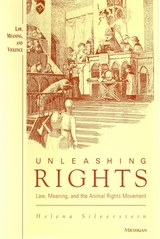 Unleashing Rights: Law, Meaning, and the Animal Rights Movement
Helena Silverstein
University of Michigan Press, 1996 Unleashing Rights is a study of the animal rights movement's efforts to advance social reform through the deployment of legal language and practices. The study looks at how prevailing understandings of rights language have shaped the attempt to put forth the idea that animals have rights, and how this attempt, in turn, offers the opportunity to reconstruct the meaning of rights. The book also examines the way litigation has influenced the movement's activities and opportunities for success.
Presented here is an investigation of the legal system through a decentered, cultural approach. Legal languages and practices are viewed as a part of everyday life--constructed, used, and interpreted not only by those who run official legal institutions but also by everyday people with a legal consciousness. Using this approach, the book questions whether the deployment of rights and litigation by animal rights advocates has challenged prevailing legal meaning.
Looking to both the constitutive and instrumental aspects of law, and to how each informs the other, Unleashing Rights finds that the resort to rights and litigation has advanced movement goals and contributed to alternative constructions of legal meaning. The study concludes that despite their many constraints, both rights talk and litigation are powerful resources for those who seek change, especially when used by strategically minded activists.
Unleashing Rights is a book that illustrates the relationship between law, social movement activism, and social change. The book joins the ongoing debate within public law scholarship that is concerned with the effectiveness of legal strategies and languages. The book also speaks to those interested in the general study of social movements and in the particular study of the animal rights movement. With its cultural approach focused on rights language and the construction of meaning, the work will be of interest to the disciplines of law and political science, as well as those who study sociology, anthropology, and philosophy.
Helena Silverstein is F. M. Kirby Assistant Professor of Government and Law, Lafayette College.
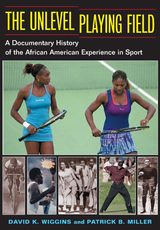 The Unlevel Playing Field: A Documentary History of the African American Experience in Sport
David K. Wiggins and Patrick B. Miller
University of Illinois Press, 2003 The Unlevel Playing Field offers a rich compendium of more than 100 primary sources that chart the intertwining history of African Americans and sport. Introductions and head-notes provided by David K. Wiggins and Patrick B. Miller place each document in context, shaping an unrivaled narrative. Readers will find dozens of accounts by Frederick Douglass, W. E. B. DuBois, Booker T. Washington, Marcus Garvey, James Weldon Johnson, Richard Wright, A. S. “Doc” Young, Eldredge Cleaver, Nikki Giovanni, John Edgar Wideman, bell hooks, James Baldwin, Roy Wilkins, Henry Louis Gates, Gerald Early, and many others. The documents range from discussions of the color line in organized baseball during the Jim Crow era and portraits of turn-of-the-century figures like the champion sprint cyclist Marshall “Major” Taylor and boxer Jack Johnson. Writers also look at modern-day issues like the participation of black athletes in the 1968 Olympics, the place of African American women in sport, and examine pioneering figures like Jackie Robinson, Muhammad Ali, Althea Gibson, Michael Jordan, Tiger Woods, and Venus and Serena Williams.
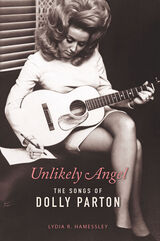 Unlikely Angel: The Songs of Dolly Parton
Lydia R. Hamessley
University of Illinois Press, 2020 Dolly Parton's success as a performer and pop culture phenomenon has overshadowed her achievements as a songwriter. But she sees herself as a songwriter first, and with good reason. Parton's compositions like "I Will Always Love You" and "Jolene" have become American standards with an impact far beyond country music. Lydia R. Hamessley's expert analysis and Parton’s characteristically straightforward input inform this comprehensive look at the process, influences, and themes that have shaped the superstar's songwriting artistry. Hamessley reveals how Parton’s loving, hardscrabble childhood in the Smoky Mountains provided the musical language, rhythms, and memories of old-time music that resonate in so many of her songs. Hamessley further provides an understanding of how Parton combines her cultural and musical heritage with an artisan’s sense of craft and design to compose eloquent, painfully honest, and gripping songs about women's lives, poverty, heartbreak, inspiration, and love. Filled with insights on hit songs and less familiar gems, Unlikely Angel covers the full arc of Dolly Parton's career and offers an unprecedented look at the creative force behind the image.
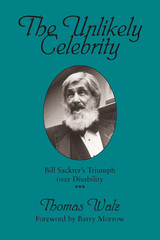 The Unlikely Celebrity: Bill Sackter's Triumph over Disability
Thomas Walz. Foreword by Barry Morrow
Southern Illinois University Press, 1998 Thomas Walz tells the story of Bill Sackter, a man who spent nearly half a century in a Minnesota mental institution and emerged to blossom into a most unlikely celebrity. Bill Sackter was committed to the Faribault State Hospital at the age of seven, there to remain until he was in his fifties. At the time of his commitment, Bill’s father had recently died; thus his sole contact with his family came through rare letters from his mother. Some years after his discharge from Faribault as a result of the movement to deinstitutionalize the mentally ill in the 1960s, Bill enjoyed a serendipitous encounter with a young college student and part-time musician, Barry Morrow. Bill became part of the Morrow family and a regular in Morrow’s music group. When Morrow accepted a job at the School of Social Work at the University of Iowa, Bill followed him to Iowa City and was put in charge of a small coffee service. Bill became an important part of the University of Iowa community, and Wild Bill’s Coffeeshop developed into an institution. A cheerful man of great good will who was a harmonica virtuoso, Bill began to inspire affectionate legends, and his life as a celebrity began in earnest. He was named Iowa’s Handicapped Person of the Year in 1977, and two television movies were made about his life—Bill, which earned Emmy awards for cowriter Barry Morrow and Mickey Rooney (as Bill) in 1981, and Bill on His Own in 1983. Years later, Morrow would earn an Oscar for his script of Rain Man. Through vignettes ranging from hilarious to near tragic. Walz reveals a remarkable human being. An account of Bill's life in an institution is necessarily part of the story, but there is much more: Bill’s role in helping a young child recover from a coma, his menagerie of friends, his love for a pet parakeet, his late-life Bar Mitzvah, his failure as a woodworker, his success as Santa, and his dignified death at the age of seventy.
Unlikely Designs
Katie Willingham
University of Chicago Press, 2017 A collection intent on worrying the boundaries between natural and unnatural, human and not, Unlikely Designs draws far-ranging source material from the back channels of knowledge making: the talk pages of Wikipedia, the personal writings of Charles Darwin, the love advice doled out by chatbots, and the eclectic inclusions on the Golden Record time capsule. It is here we discover the allure of the index, what pleasure there is in bending it to our own devices. At the same time, these poems also remind us that logic is often reckless, held together by nothing more than syntactical short circuits—well, I mean, sorry, yes—prone to cracking under closer scrutiny. Returning us again and again to these gaps, Katie Willingham reveals how any act of preservation is inevitably an act of curation, an outcry against the arbitrary, by attempting to make what is precious also what survives.
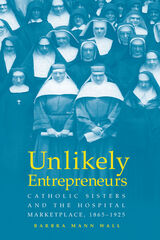 UNLIKELY ENTREPRENEURS: Catholic Sisters & the Hospital Marketplace, 1865–1925
Barbra Mann Wall
Ohio State University Press, 2005 In Unlikely Entrepreneurs, Barbra Mann Wall looks at the development of religious hospitals in the late nineteenth and early twentieth centuries and the entrepreneurial influence Catholic sisters held in this process. When immigrant nuns came to the United States in the late nineteenth century, they encountered a market economy that structured the way they developed their hospitals. Sisters enthusiastically engaged in the market as entrepreneurs, but they used a set of tools and understanding that were counter to the market. Their entrepreneurship was not to expand earnings but rather to advance Catholic spirituality. Wall places the development of Catholic hospital systems (located in Illinois, Indiana, Minnesota, Texas, and Utah) owned and operated by Catholic sisters within the larger social, economic, and medical history of the time. In the modern health care climate, with the influences of corporations, federal laws, spiraling costs, managed care, and medical practices that rely less on human judgments and more on technological innovations, the “modern” hospital reflects a dim memory of the past. This book will inform future debates on who will provide health care as the sisters depart, how costs will be met, who will receive care, and who will be denied access to health services.
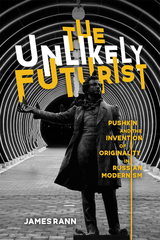 The Unlikely Futurist: Pushkin and the Invention of Originality in Russian Modernism
James Rann
University of Wisconsin Press, 2020 In the early twentieth century, a group of writers banded together in Moscow to create purely original modes of expression. These avant-garde artists, known as the Futurists, distinguished themselves by mastering the art of the scandal and making shocking denunciations of beloved icons. With publications such as "A Slap in the Face of Public Taste," they suggested that Aleksandr Pushkin, the founder of Russian literature, be tossed off the side of their "steamship of modernity."
Through systematic and detailed readings of Futurist texts, James Rann offers the first book-length study of the tensions between the outspoken literary group and the great national poet. He observes how those in the movement engaged with and invented a new Pushkin, who by turns became a founding father to rebel against, a source of inspiration to draw from, a prophet foreseeing the future, and a monument to revive.
Rann's analysis contributes to the understanding of both the Futurists and Pushkin's complex legacy. The Unlikely Futurist will appeal broadly to scholars of Slavic studies, especially those interested in literature and modernism.
Unlikely Heroes: The Southern Judges Who Made Brown Work
Jack Bass
University of Alabama Press, 1981 "I think there has been no more heroic episode in American law than the work of southern federal judges in ending racial discrimination in the South. Jack Bass has brought this recent history to life, telling us much that we had not known." —Anthony Lewis, New York Times
Unlikely Heroes is a gripping and readable account of Brown v. Board of Education of Topeka, the watershed 1954 U.S. Supreme Court ruling that ended racially segregated schools. The "unlikely heroes" whose lives and decisions that Jack Bass traces are the federal judges—primarily on the U.S. Fifth Circuit Court of Appeals—who vigorously and skillfully implemented the Brown decision in six southern states. These rich profiles show the character of the men who gave up prosperous lives, popularity, and friends to see that the constitutional rights of all U.S. citizens were protected.
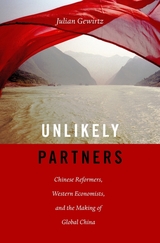 Unlikely Partners: Chinese Reformers, Western Economists, and the Making of Global China
Julian Gewirtz
Harvard University Press, 2017 Unlikely Partners recounts the story of how Chinese politicians and intellectuals looked beyond their country’s borders for economic guidance at a key crossroads in the nation’s tumultuous twentieth century. Julian Gewirtz offers a dramatic tale of competition for influence between reformers and hardline conservatives during the Deng Xiaoping era, bringing to light China’s productive exchanges with the West.
When Mao Zedong died in 1976, his successors seized the opportunity to reassess the wisdom of China’s rigid commitment to Marxist doctrine. With Deng Xiaoping’s blessing, China’s economic gurus scoured the globe for fresh ideas that would put China on the path to domestic prosperity and ultimately global economic power. Leading foreign economists accepted invitations to visit China to share their expertise, while Chinese delegations traveled to the United States, Hungary, Great Britain, West Germany, Brazil, and other countries to examine new ideas. Chinese economists partnered with an array of brilliant thinkers, including Nobel Prize winners, World Bank officials, battle-scarred veterans of Eastern Europe’s economic struggles, and blunt-speaking free-market fundamentalists.
Nevertheless, the push from China’s senior leadership to implement economic reforms did not go unchallenged, nor has the Chinese government been eager to publicize its engagement with Western-style innovations. Even today, Chinese Communists decry dangerous Western influences and officially maintain that China’s economic reinvention was the Party’s achievement alone. Unlikely Partners sets forth the truer story, which has continuing relevance for China’s complex and far-reaching relationship with the West.
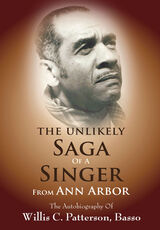 The Unlikely Saga of a Singer from Ann Arbor: The Autobiography of Willis C. Patterson, Basso
Willis Patterson
Michigan Publishing, 2015 (From the Preface) Many budding musicians—even from affluent families with both parents living at home and providing a strong supportive environment, combined with constant encouragement—find it very challenging to earn a PhD and reach the pinnacle of a deanship and professorship at a competitive institution of higher learning in the United States of America. As you read this book you will find that no one informed Willis Patterson of this phenomenon because without having the aforementioned criteria, he accomplished those goals and many more.
The book’s main character begins his life, similar to a diamond in the rough, and over time evolves into a rare gem at maturity. These pages will reveal how Willis Patterson of Ann Arbor, Michigan developed from somewhat of a lost child in the 1930s into a: sophisticated academician (Ph.D. in Higher Education Administration and Supervision from Wayne State University in Detroit, MI); a superior vocal performer; Voice Department Chair, Fulbright Scholar; esteemed Master Voice Teacher; Choral and Glee Club director extraordinaire; University Leader in the recruitment and retention of Minority students (Voice/Performing/Composition); an established Church Choir Director; and Associate Academic Dean of the School of Music at one of America’s finest universities, the University of Michigan.
This book is about a very humble man of significant stature. Although he was motivated and driven to become the best he could be in his quest for excellence—by kicking open the door of opportunity whenever it was presented (audition ready)—he never forgot his family members or hometown acquaintances.
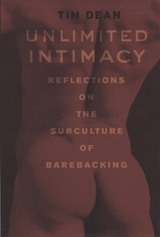 Unlimited Intimacy: Reflections on the Subculture of Barebacking
Tim Dean
University of Chicago Press, 2009 Barebacking—when gay men deliberately abandon condoms and embrace unprotected sex—has incited a great deal of shock, outrage, anger, and even disgust, but very little contemplation. Purposely flying in the face of decades of safe-sex campaigning and HIV/AIDS awareness initiatives, barebacking is unquestionably radical behavior, behavior that most people would rather condemn than understand. Thus the time is ripe for Unlimited Intimacy, Tim Dean’s riveting investigation into barebacking and the distinctive subculture that has grown around it. Audacious and undeniably provocative, Dean’s profoundly reflective account is neither a manifesto nor an apology; instead, it is a searching analysis that tests the very limits of the study of sex in the twenty-first century. Dean’s extensive research into the subculture provides a tour of the scene’s bars, sex clubs, and Web sites; offers an explicit but sophisticated analysis of its pornography; and documents his own personal experiences in the culture. But ultimately, it is HIV that animates the controversy around barebacking, and Unlimited Intimacy explores how barebackers think about transmitting the virus—especially the idea that deliberately sharing it establishes a new network of kinship among the infected. According to Dean, intimacy makes us vulnerable, exposes us to emotional risk, and forces us to drop our psychological barriers. As a committed experiment in intimacy without limits—one that makes those metaphors of intimacy quite literal—barebacking thus says a great deal about how intimacy works. Written with a fierce intelligence and uncompromising nerve, Unlimited Intimacy will prove to be a milestone in our understanding of sexual behavior.
 Unlimited Love: Altruism, Compassion, and Service
Stephen G. Post
Templeton Press, 2003 What if we could prove that love heals mental illness and is vital to successful therapeutic outcomes in all areas of health care? What if we could prove that people who live more for others than for self have greater psychological well-being? In Unlimited Love, Post examines the question of what we mean by "unlimited love"; his focus is not on "falling" into love, which is "altogether natural, easy, and delusional." Rather, he focuses on the difficult learned ascent that "begins with insight into the need for tolerance of ubiquitous imperfection, and matures into unselfish concern, gratitude, and compassion." He considers social scientific and evolutionary perspectives on human altruistic motivations, and he analyzes these perspectives in a wide interdisciplinary context at the interface of science, ethics, and religion.
In Unlimited Love, Stephen Post presents an argument for the creation of a new interdisciplinary field for the study of love and unlimited love, "engaging great minds and hoping to shape the human future away from endless acrimony, hatred, and violence."
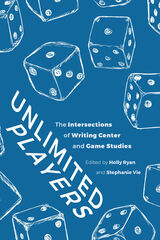 Unlimited Players: The Intersections of Writing Center and Game Studies
Holly Ryan
Utah State University Press, 2021 Unlimited Players provides writing center scholars with new approaches to engaging with multimodality in the writing center through the lenses of games, play, and digital literacies. Considering how game scholarship can productively deepen existing writing center conversations regarding the role of creativity, play, and engagement, this book helps practitioners approach a variety of practices, such as starting new writing centers, engaging tutors and writers, developing tutor education programs, developing new ways to approach multimodal and digital compositions brought to the writing center, and engaging with ongoing scholarly conversations in the field.
The collection opens with theoretically driven chapters that approach writing center work through the lens of games and play. These chapters cover a range of topics, including considerations of identity, empathy, and power; productive language play during tutoring sessions; and writing center heuristics. The last section of the book includes games, written in the form of tabletop game directions, that directors can use for staff development or tutors can play with writers to help them develop their skills and practices.
No other text offers a theoretical and practical approach to theorizing and using games in the writing center. Unlimited Players provides a new perspective on the long-standing challenges facing writing center scholars and offers insight into the complex questions raised in issues of multimodality, emerging technologies, tutor education, identity construction, and many more. It will be significant to writing center directors and administrators and those who teach tutor training courses.
Unlocking Divine Action
Michael J. Dodds
Catholic University of America Press, 2012 Provides a sustained account of how the thought of Aquinas may be used in conjunction with contemporary science to deepen our understanding of divine action and address such issues as creation, providence, prayer, and miracles.
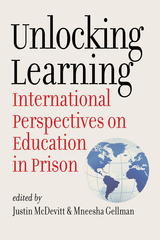 Unlocking Learning: International Perspectives on Education in Prison
Edited by Justin McDevitt and Mneesha Gellman
Brandeis University Press, 2024 Contributors from many countries share their insights about effective educational programs for people in prison and show what the United States can learn from the models and struggles beyond its borders.
Countries around the world have disparate experiences with education in prison. For decades, the United States has been locked in a pattern of exceptionally high mass incarceration. Though education has proven to be an impactful intervention, its role and the level of support it receives vary widely. As a result, effective opportunities for incarcerated people to reroute their lives during and after incarceration remain diffuse and inefficient. This volume highlights unique contributions from the field of education in prison globally. In this volume, academics and practitioners highlight new approaches and interesting findings from carceral interventions across twelve countries. From a college degree-granting program in Mexico to educational best practices in Norway and Belgium that support successful reentry, innovations in education are being developed in prison spaces around the world. As contributors from many countries share their insights about providing effective educational programs to incarcerated people, the United States can learn from the models and struggles beyond its borders.
|
|


